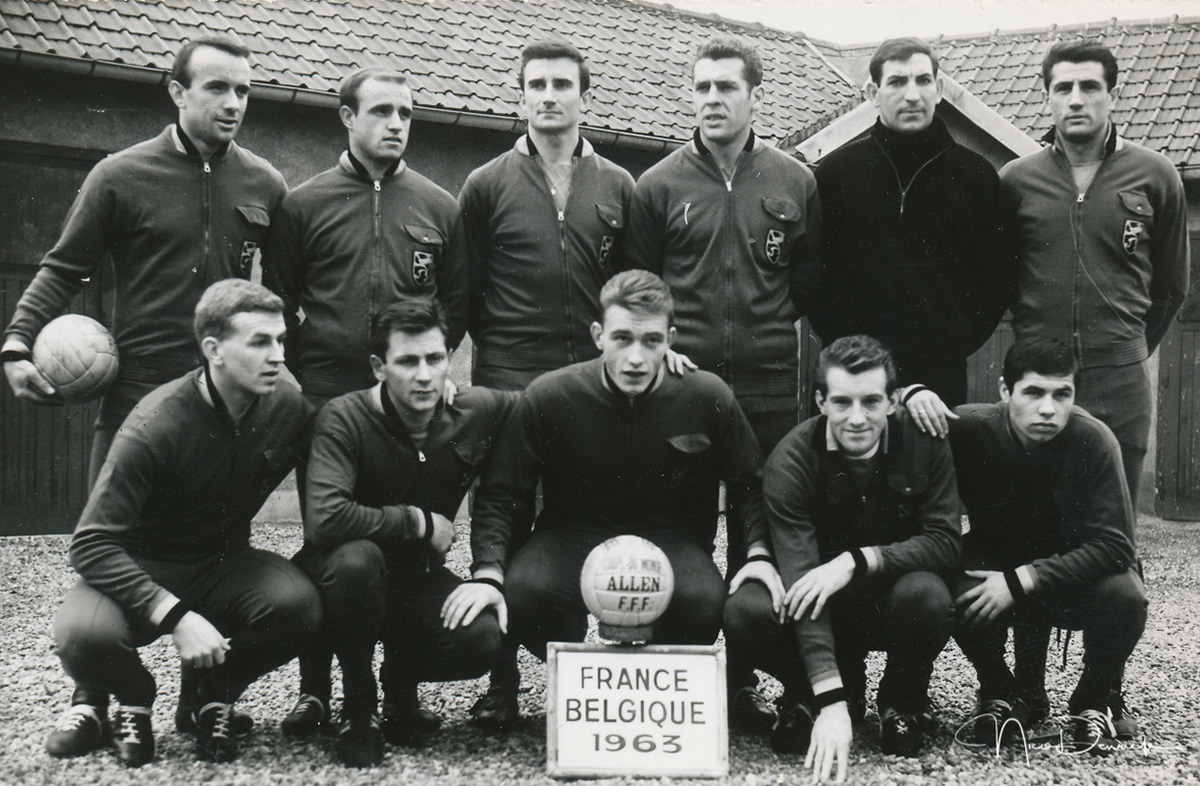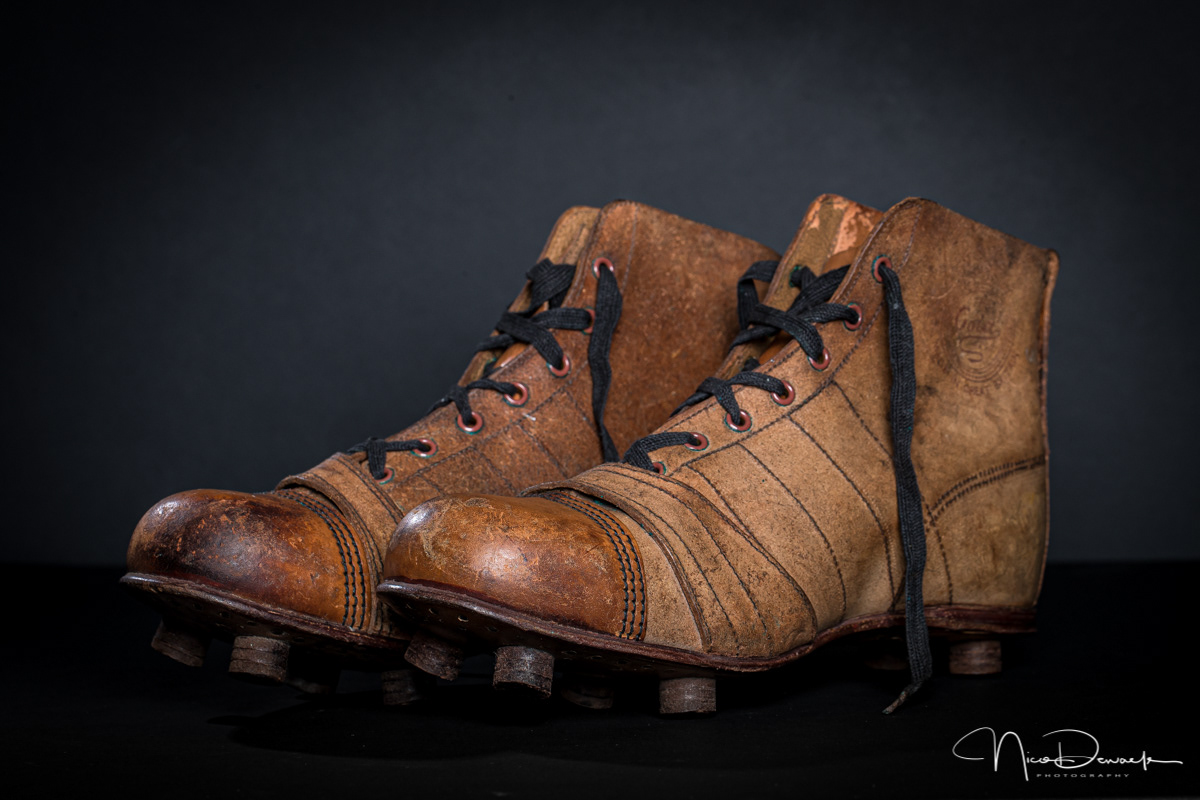
1920s brown leather soccer boots with leather soles and nailed on studs
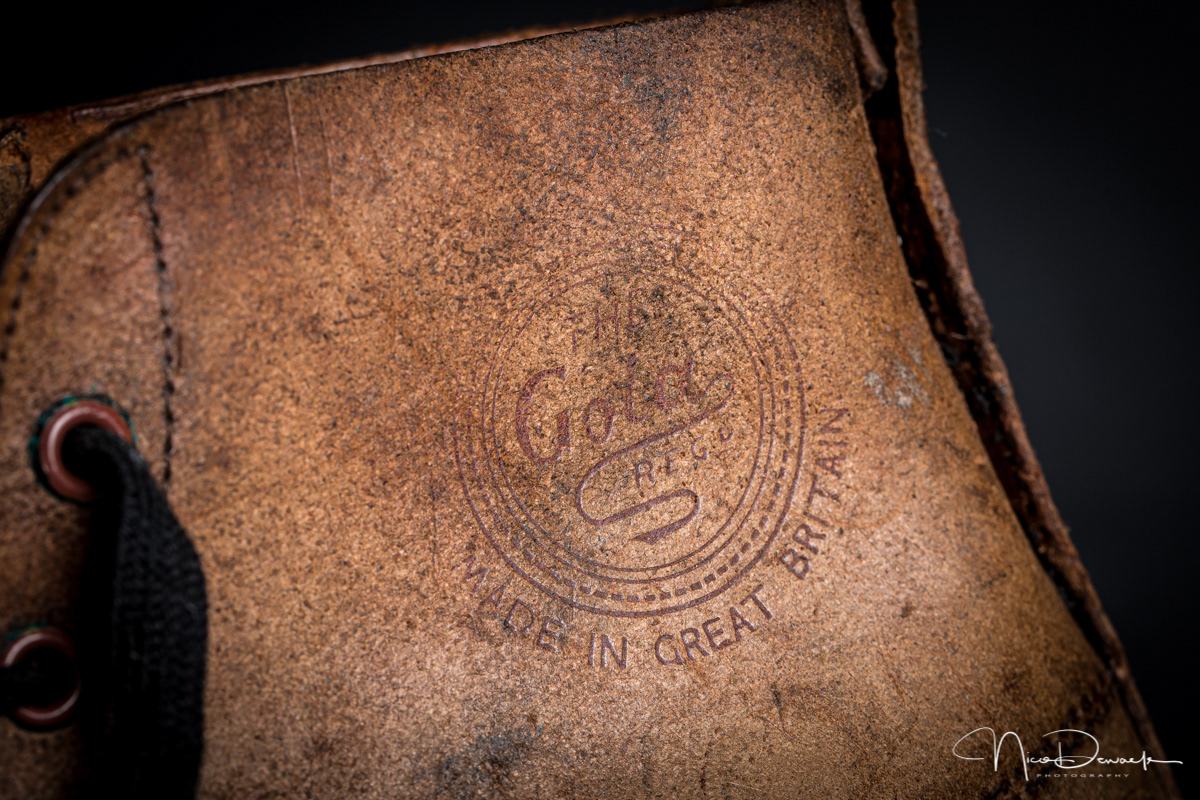
The boots feature The Gola logo on the outer sides
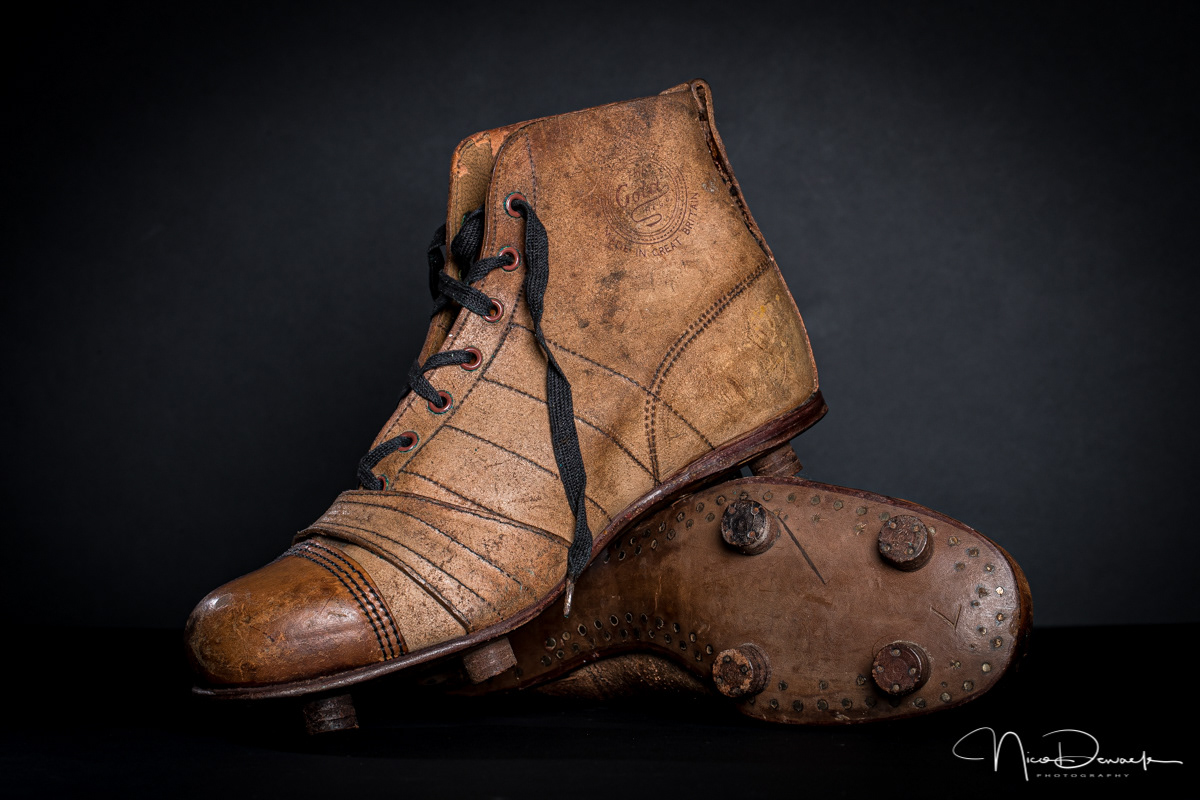
Gola started in 1905 as a manufacturer of soccer footwear
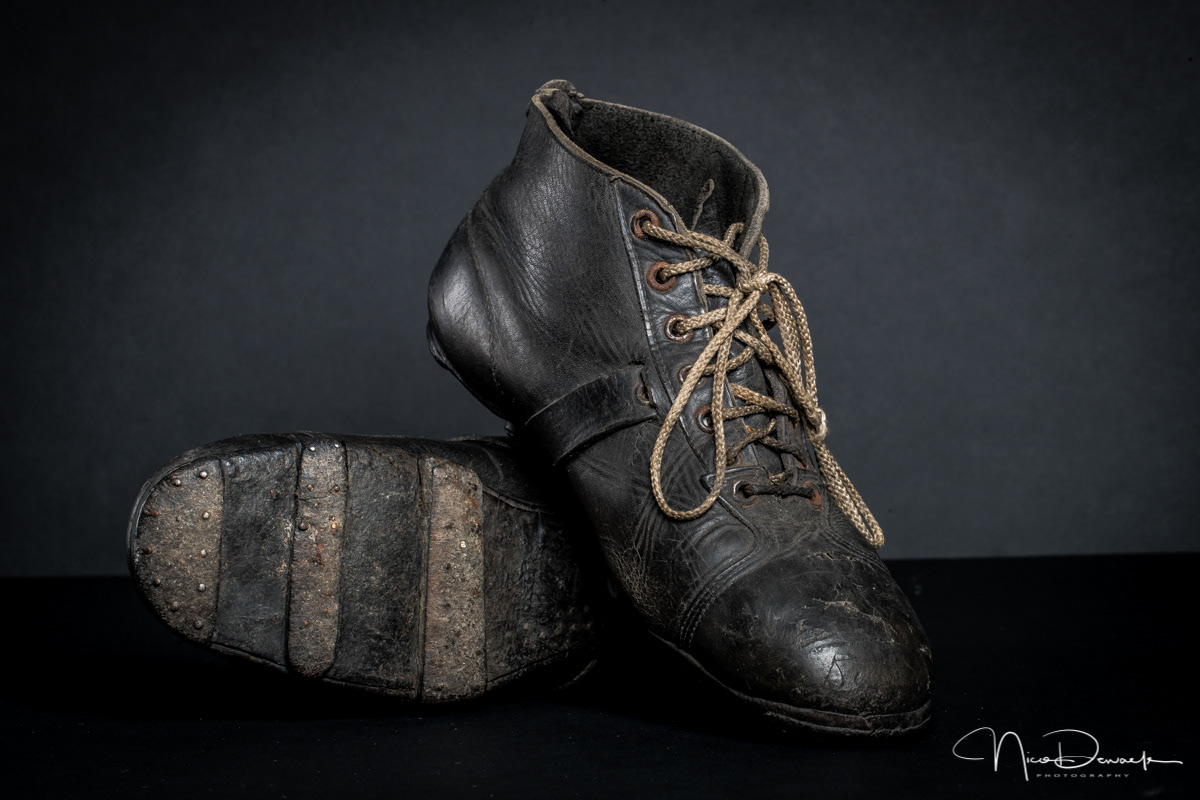
1920s Leather soccer cleats with strips to prevent slipping
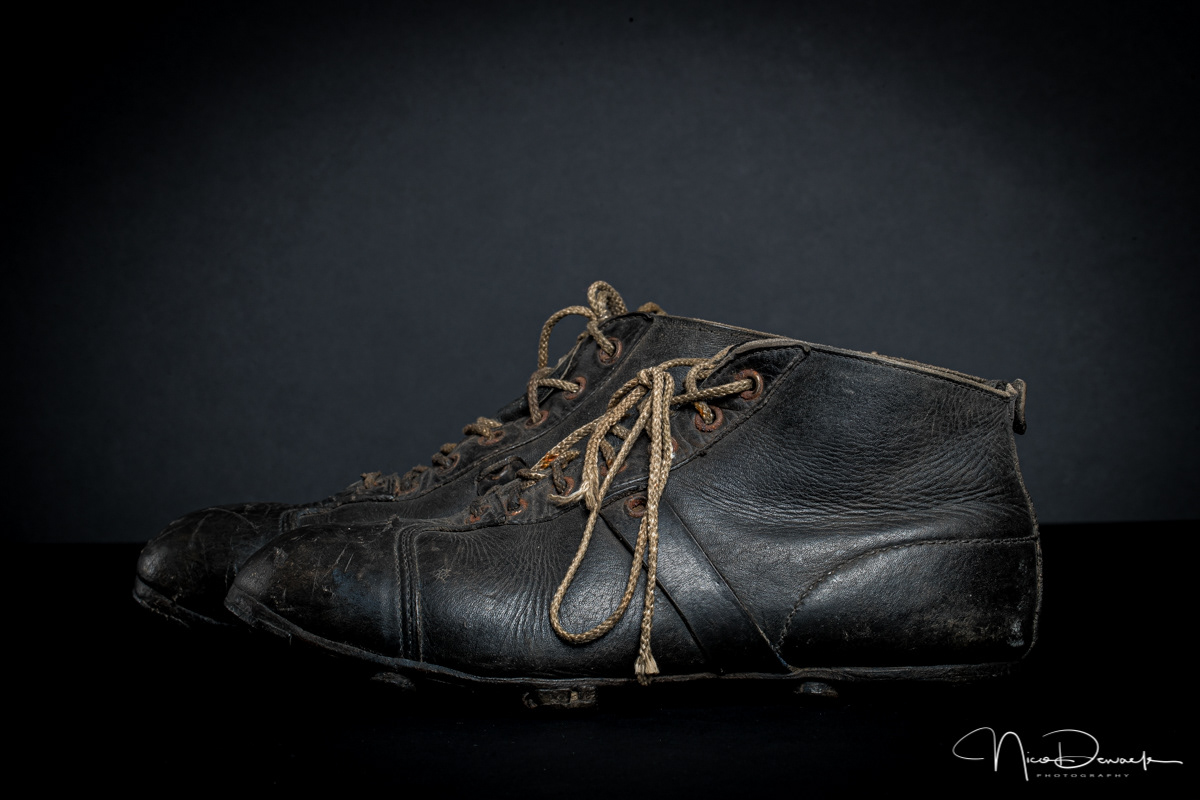
1920s Leather soccer cleats

Pair of 1930s shin pads

Leather T-panel football (1930-1940)

Olivers Spot-Kick Children's Soccer Shoes (ca 1950)
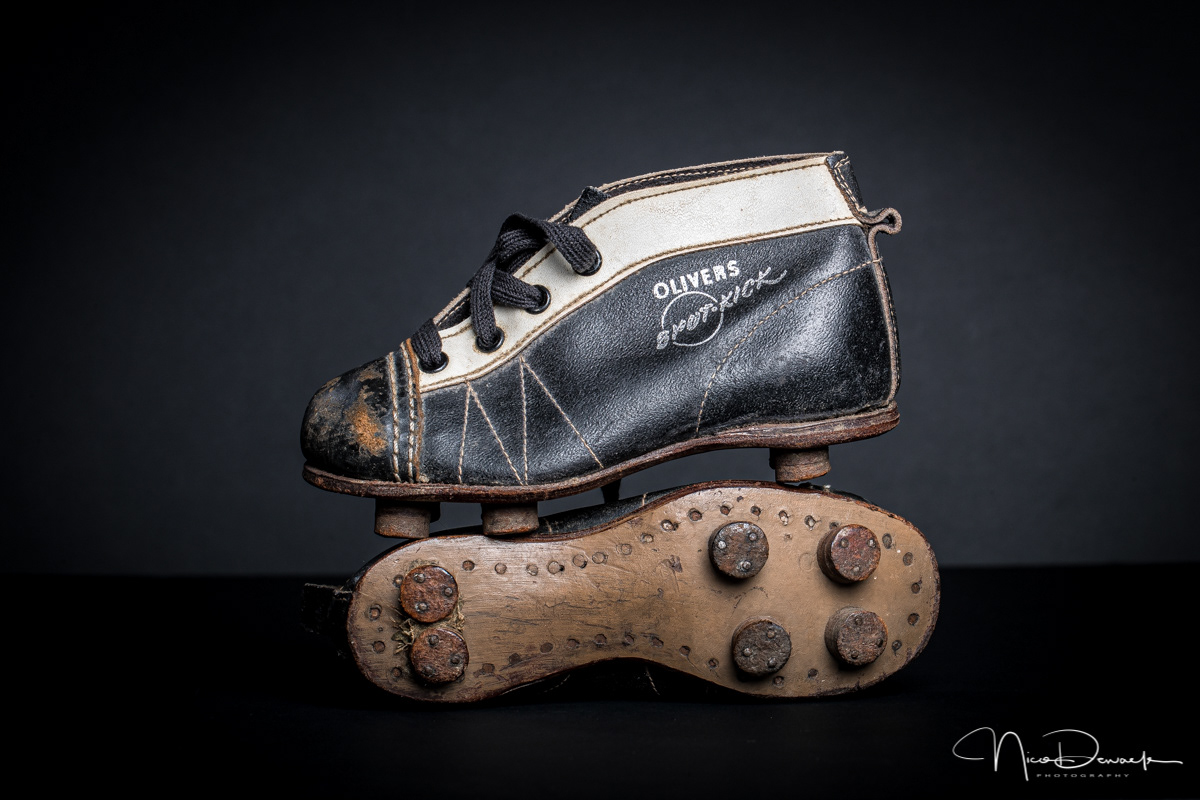
Olivers Spot-Kick Children's Soccer Shoes (ca 1950)

Leather Replacement Studs (1930-1940)
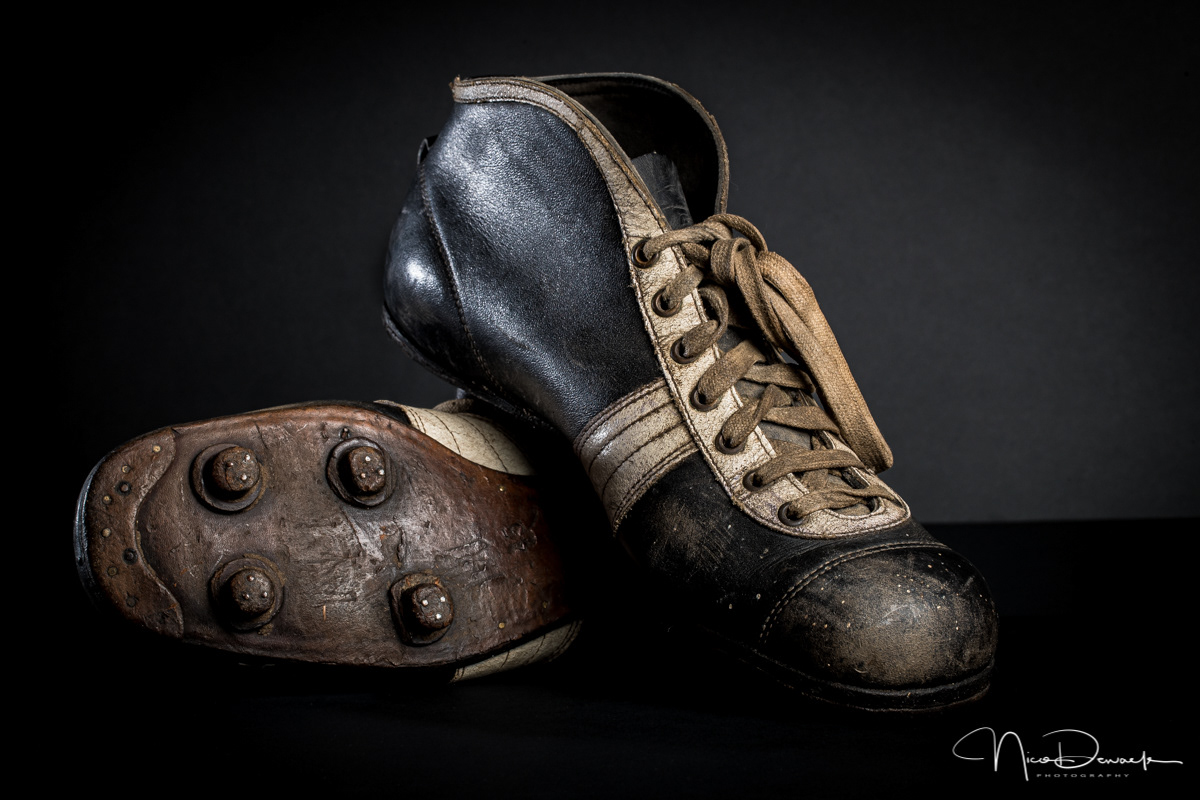
Puma Type 320/95 KICKER (1954)

Same cleats as in previous picture, but with interchangeable studs (ca 1955)

The interchangeable studs
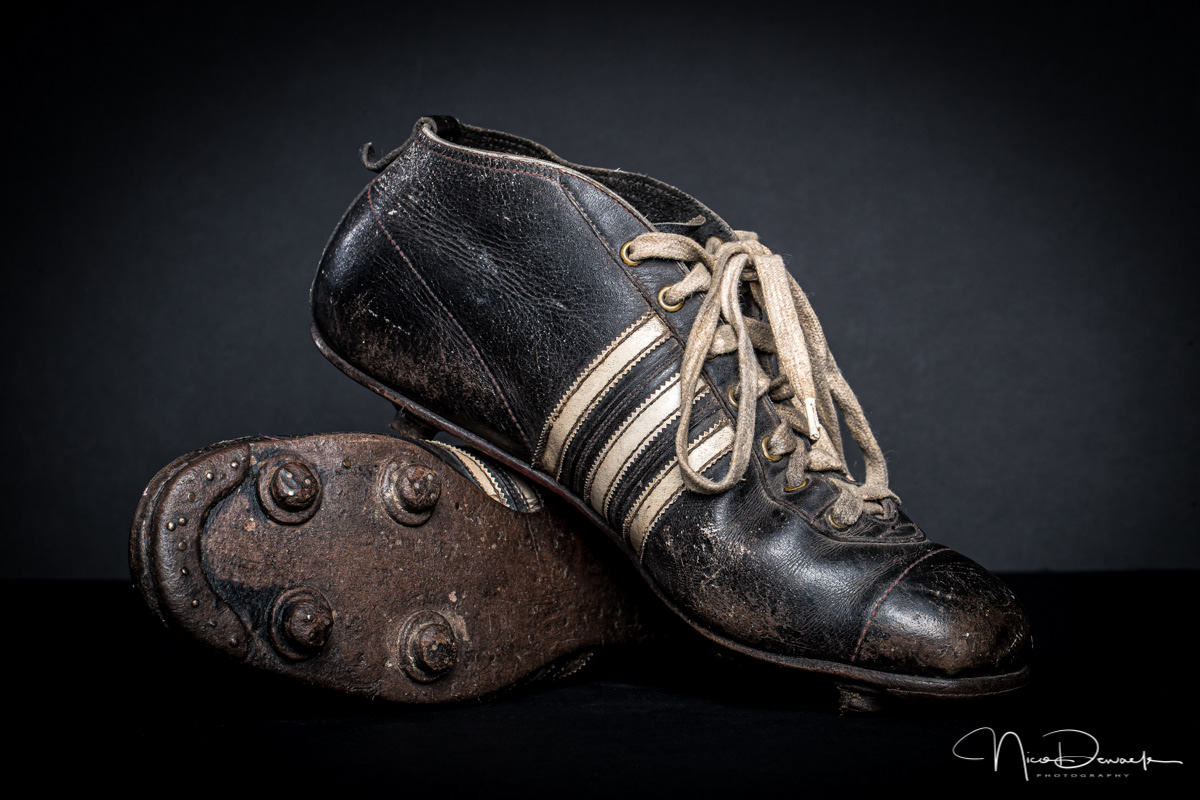
Adidas Schüß soccer cleats (ca 1955)

"adidas Schüß anti-BAKTERIELL"
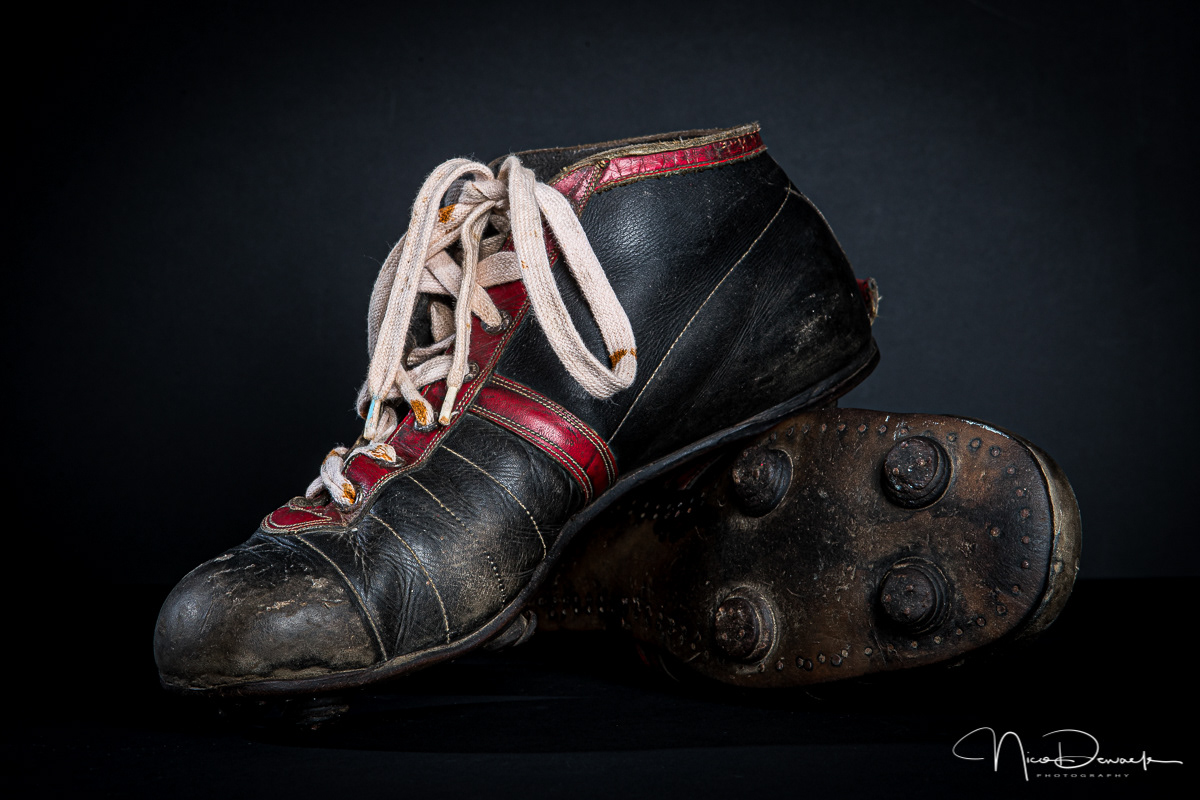
1950s leather soccer cleats with leather nailed studs
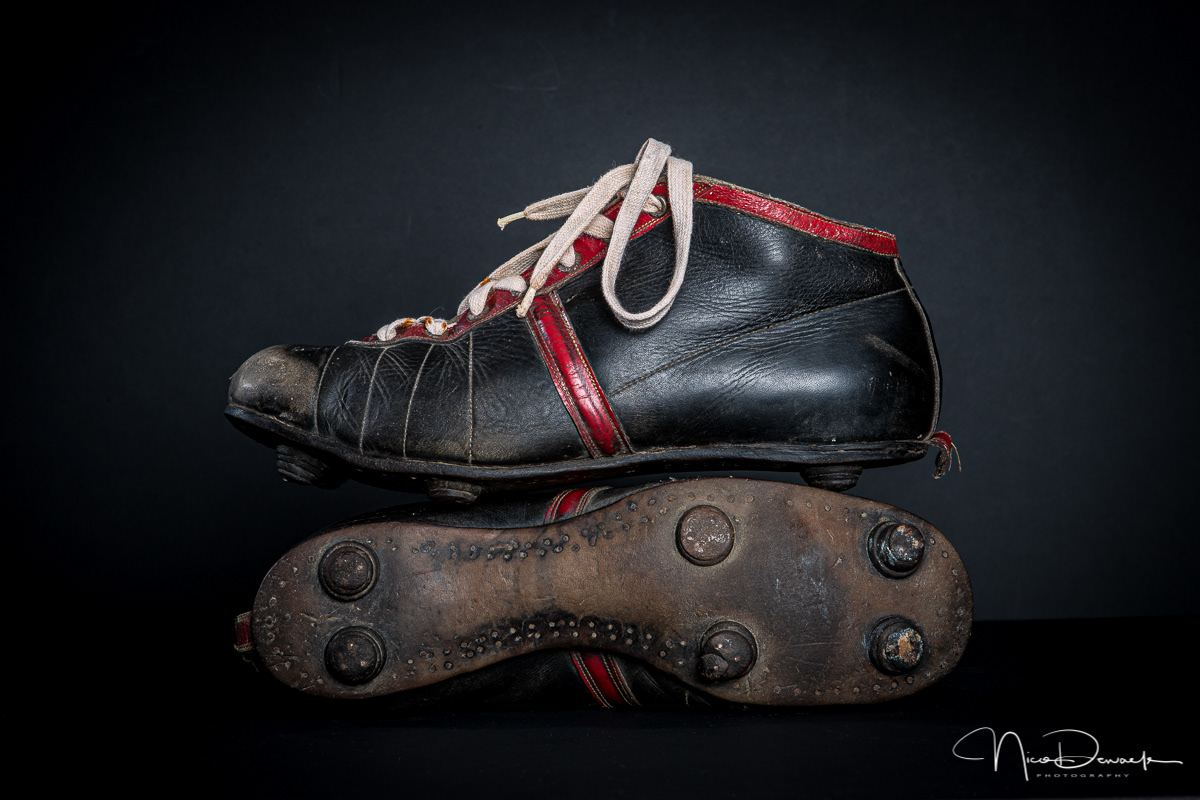
1950s leather soccer cleats with leather nailed studs

1950s soccer kit

1950s boys game kit (boots, pads, spare laces, soap tin with soap ,and the old bag)

The 1950s boots remained uncleaned

Make: Cert Continental (Size 8)

Late 1950s leather soccer cleats with Quick (replaced?) studs
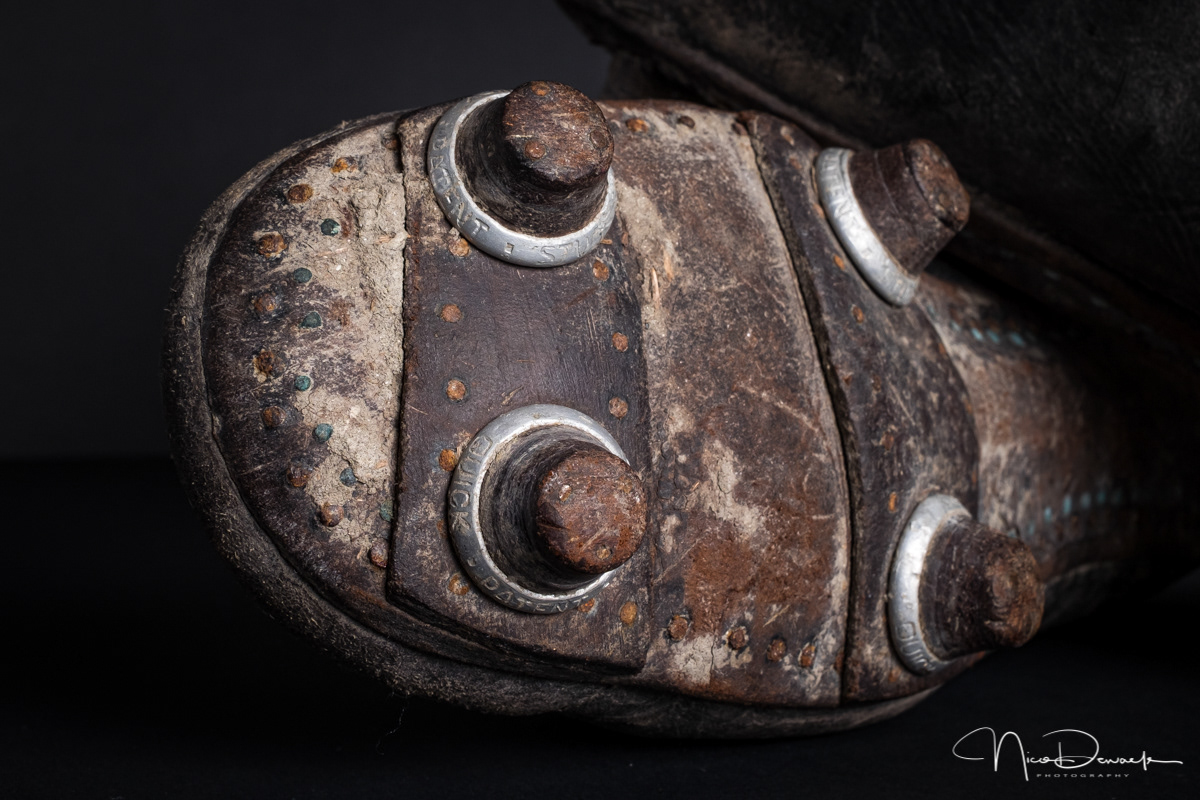
The Quick Patent studs in detail
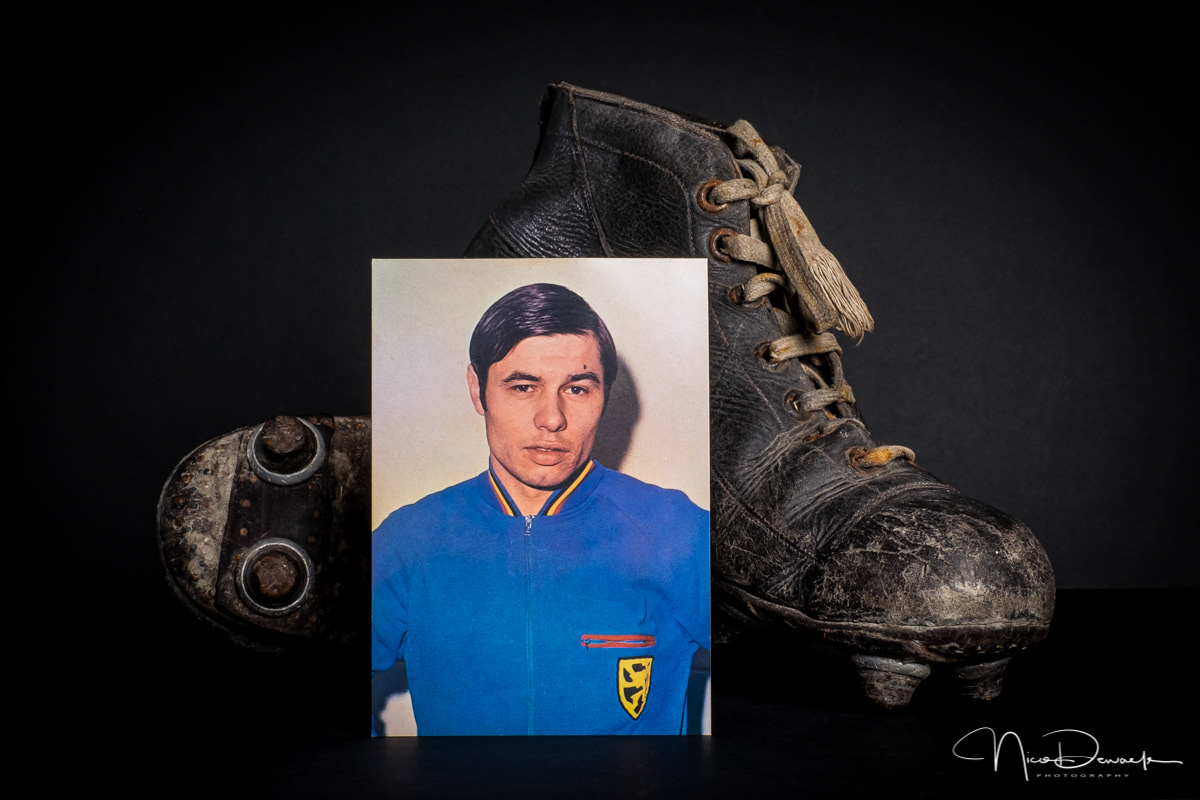
These cleats were used by Wilfried Puis when he played for Ostend.
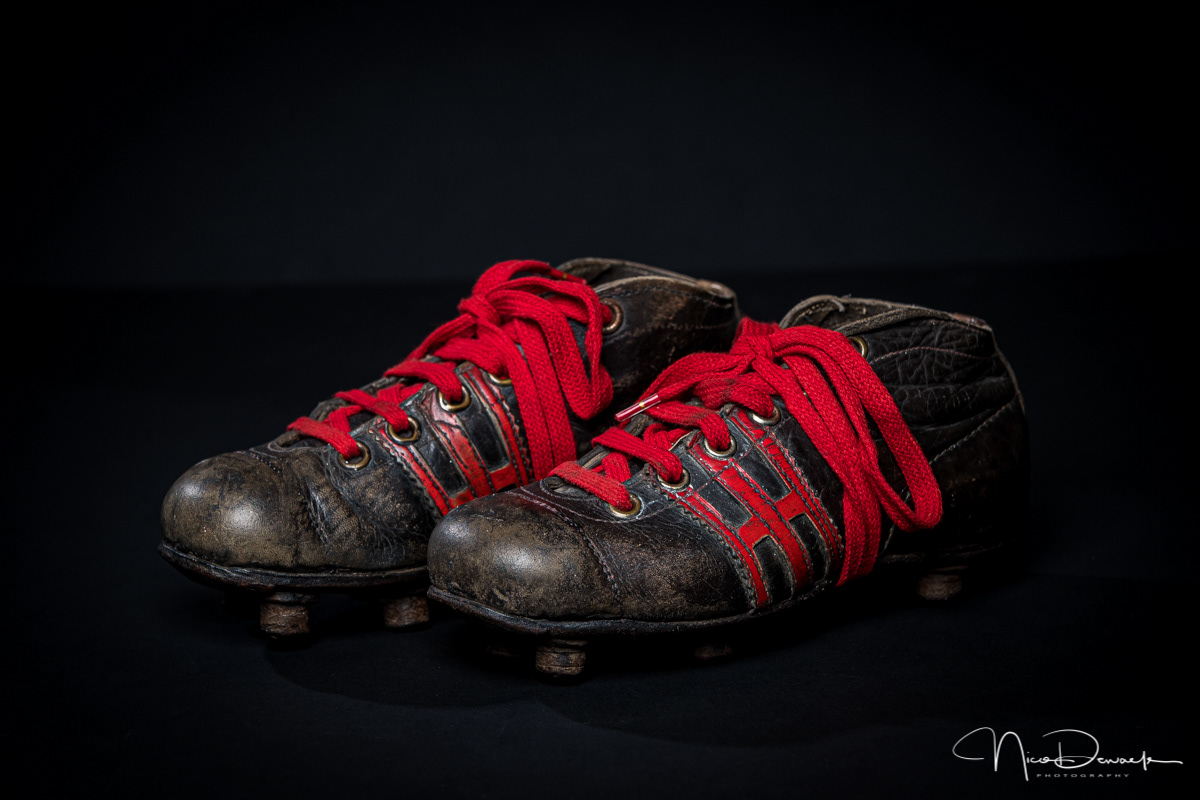
1950s junior leather boots with leather studs

Late 1950s childrens boots (make: Bata Cup Tie)

Still with mud (Make: Bata Cup Tie)
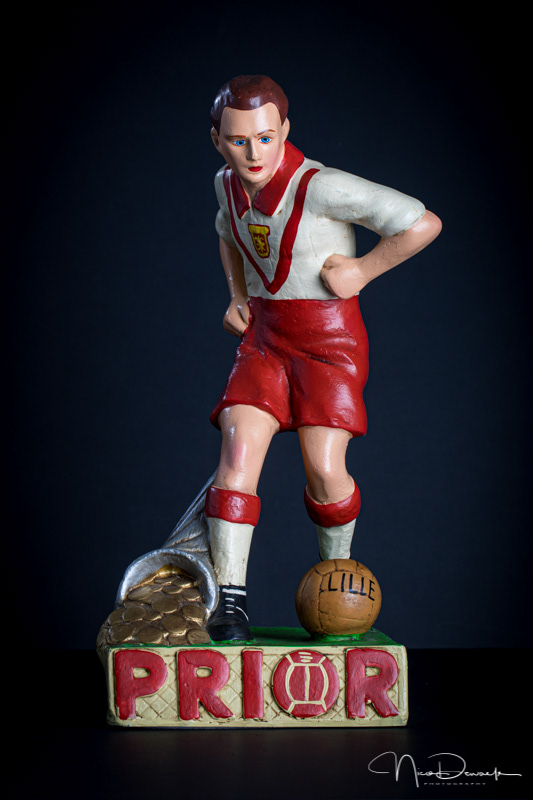
Late 1960s or early 1970s figurine in polychrome plaster. "prior" was the prognosis for football games.
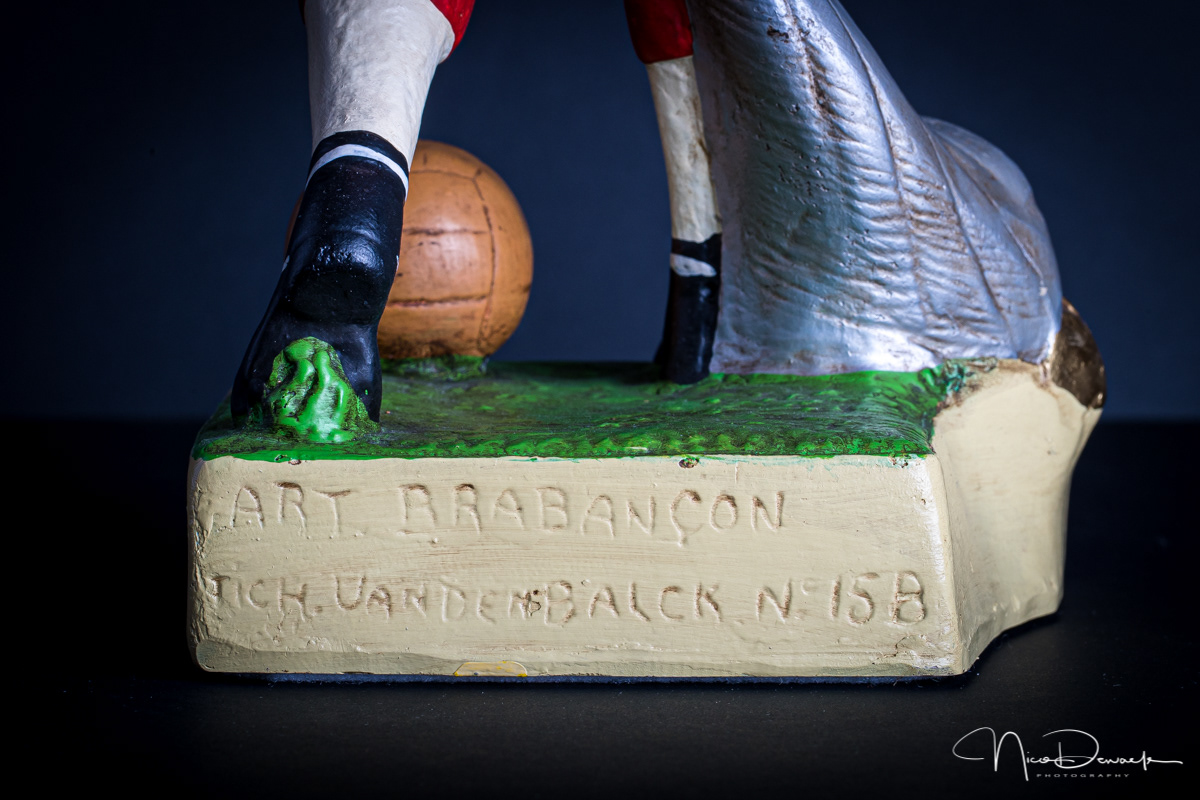
Art Brabançon by Tich Vandenbalck
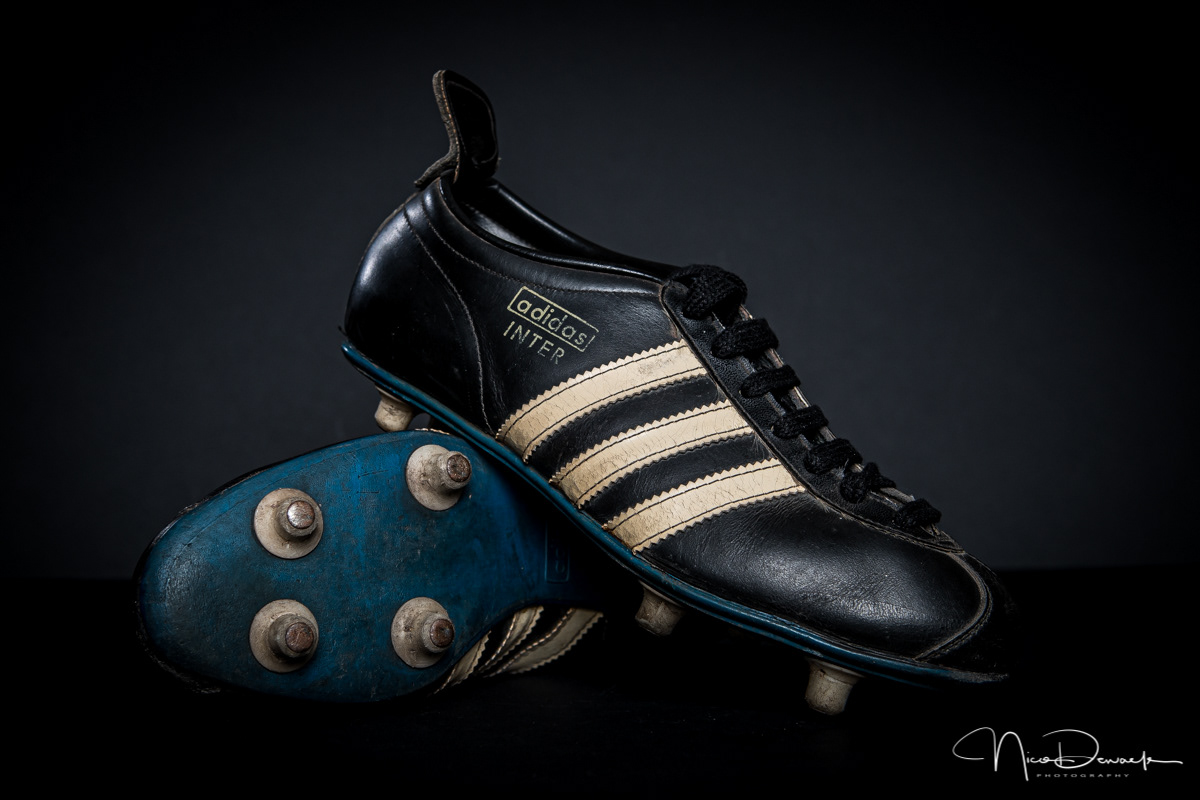
1964 leather Adidas Inter soccer cleats
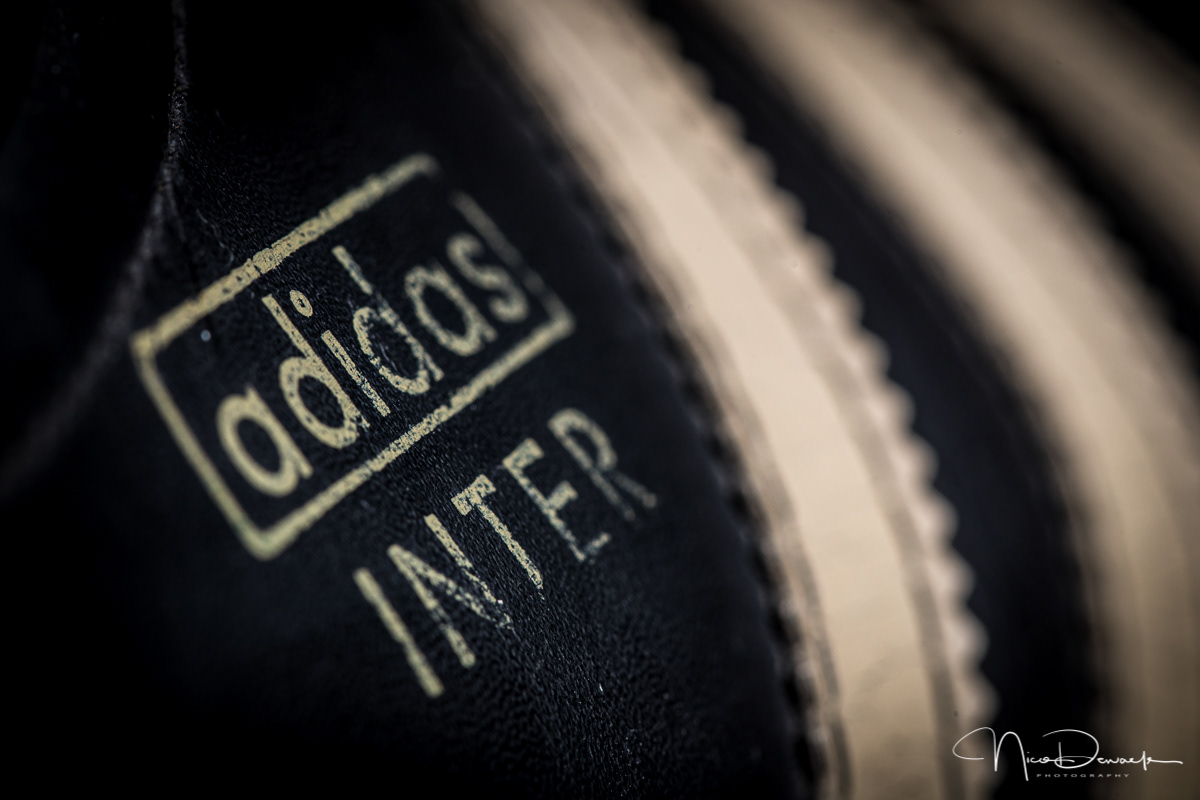
1964 Adidas Inter
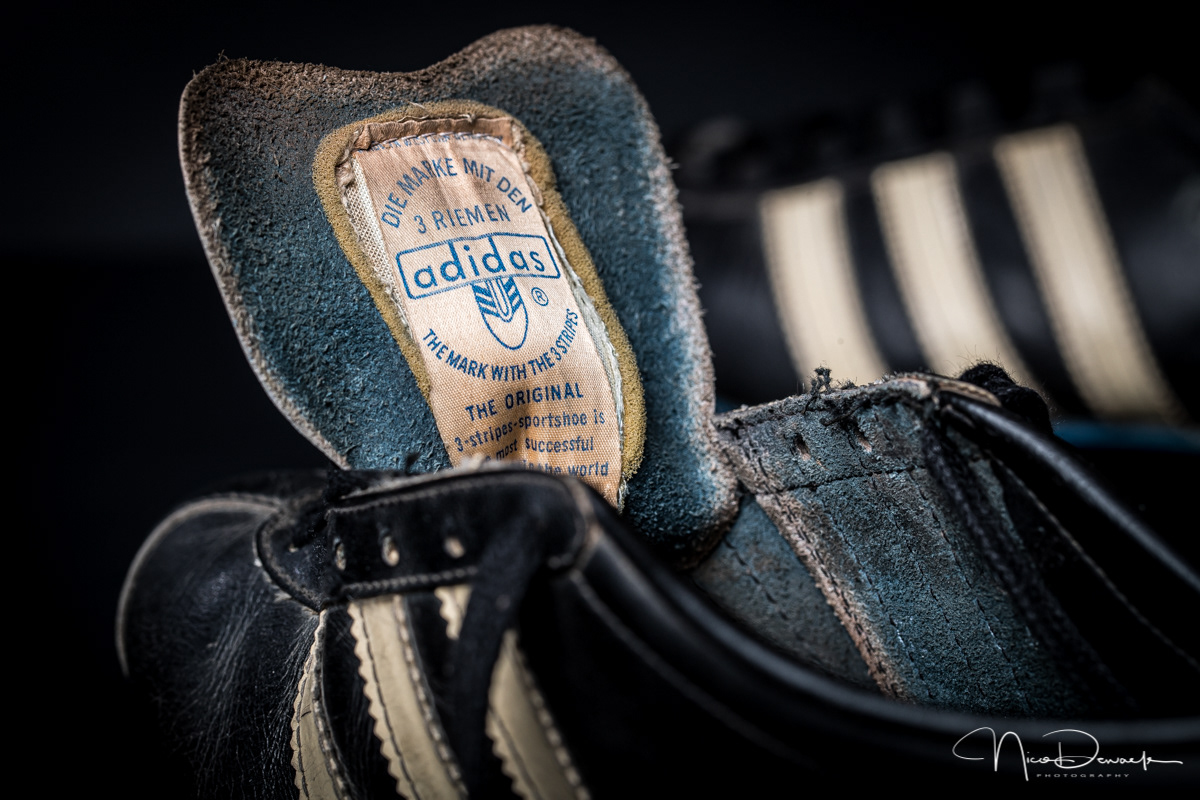
1964 Adidas Inter - made in West Germany
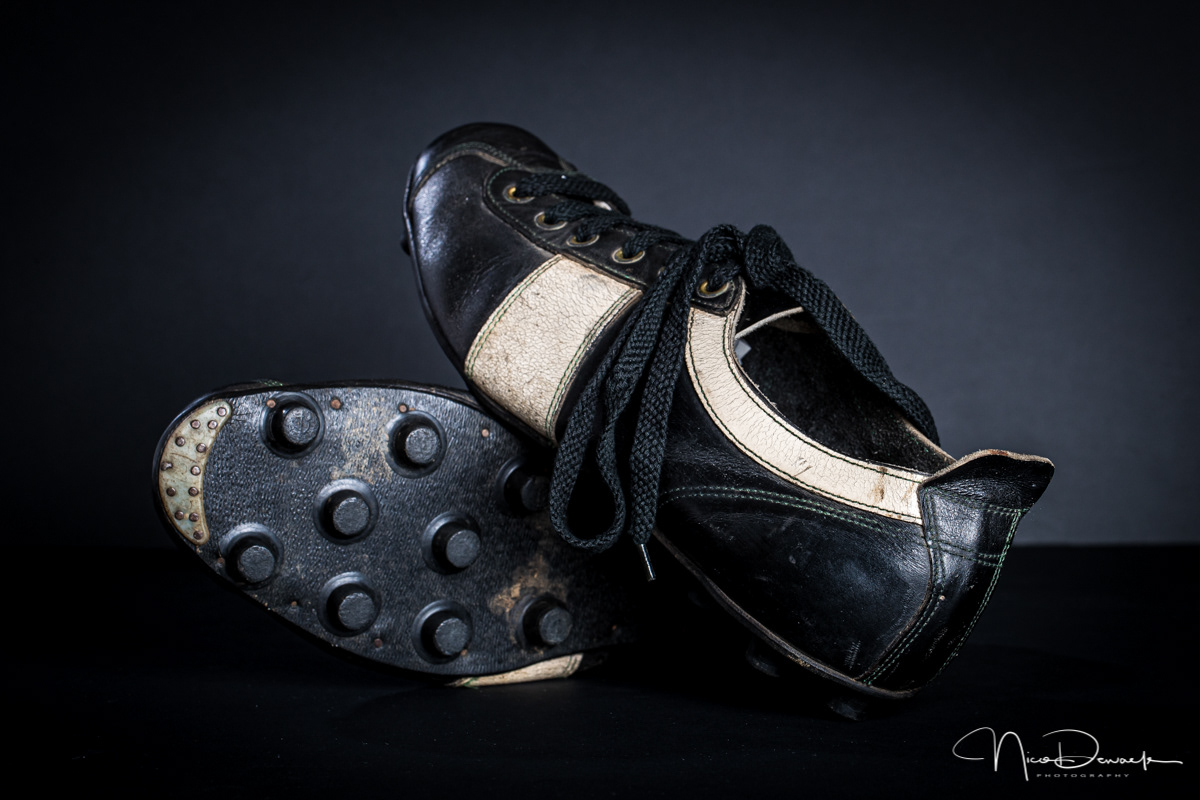
Late 1960s or early 1970s leather cleats with rubber sole and studs. Make Cup?
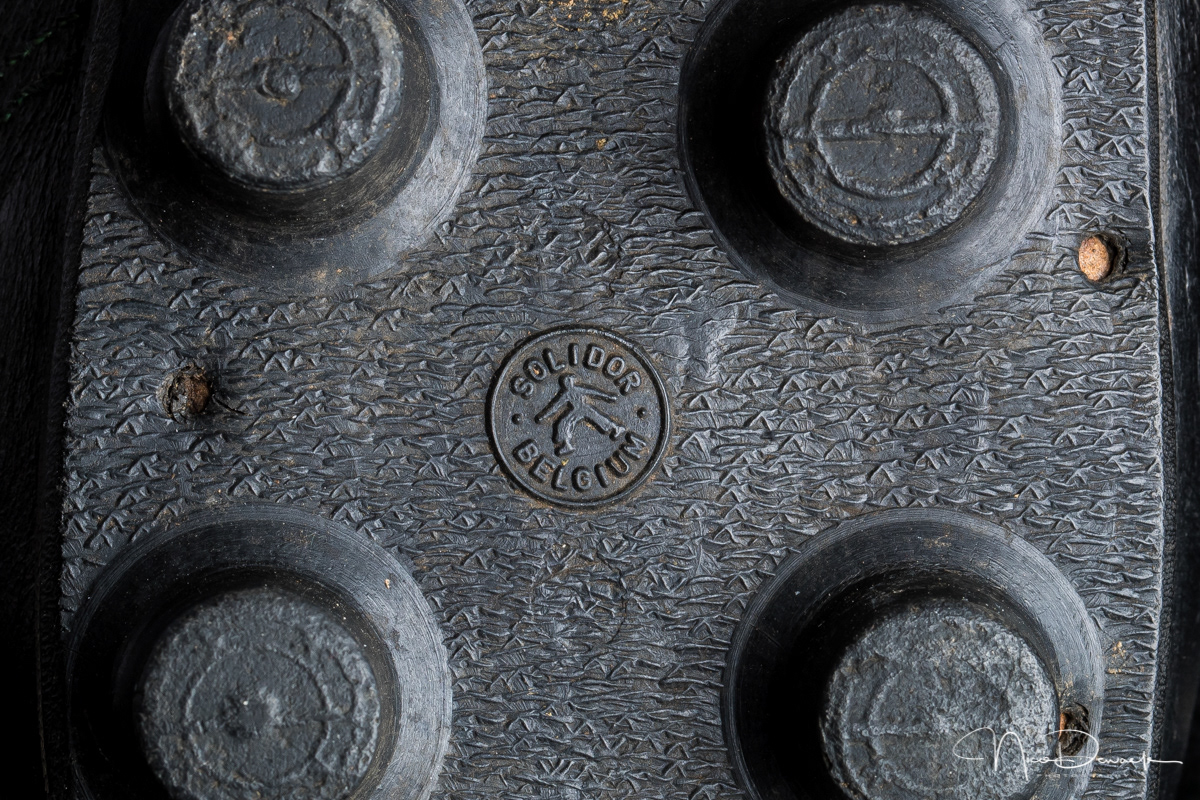
The rubber sole was made in de Belgian Solidor Factory in Lauwe.
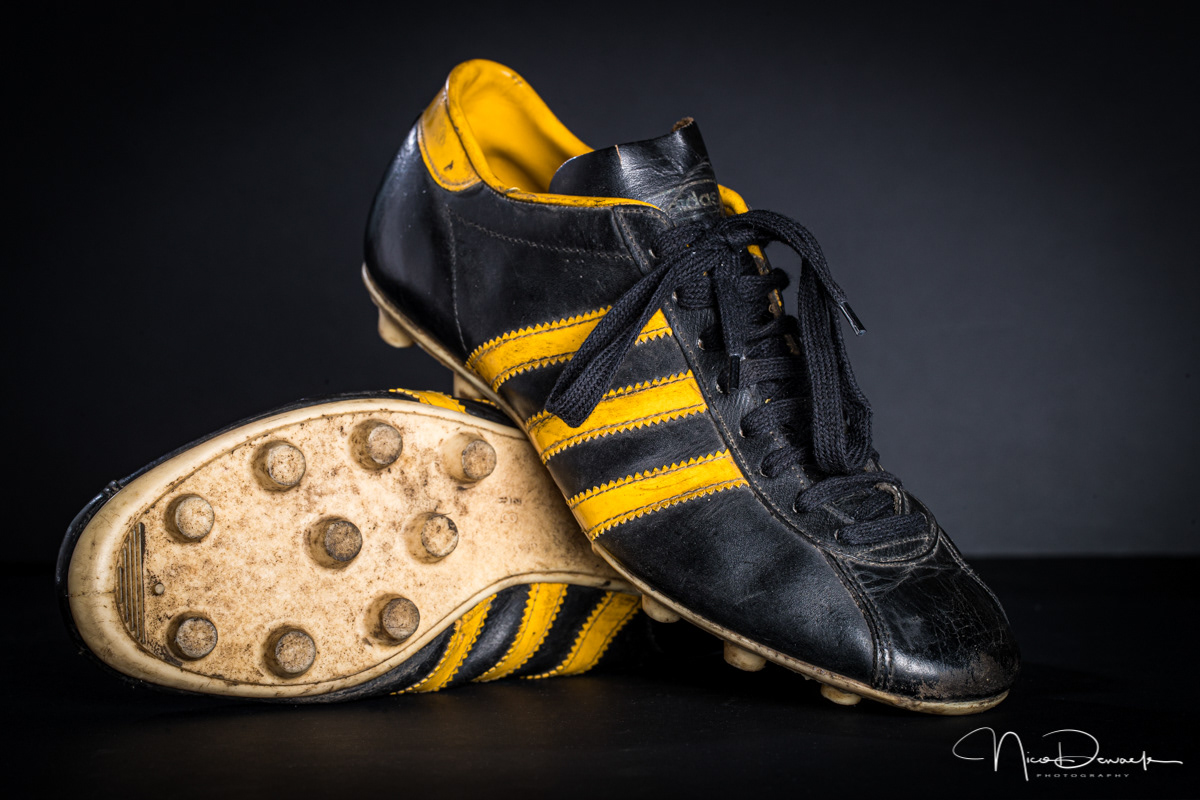
1970s Adidas Brasil. Leather cleats with rubber sole and studs.
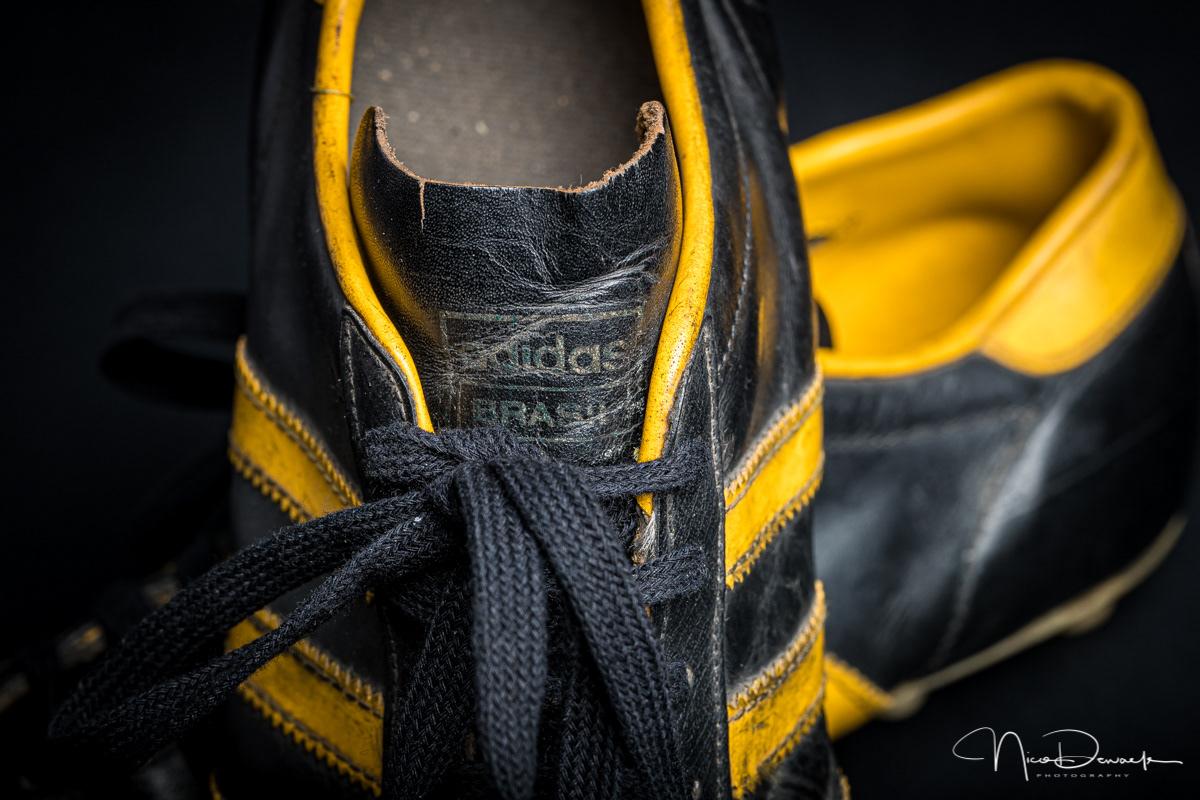
1970s Adidas Brasil. Leather cleats with rubber sole and studs.
Belgian soccer history in black and white

In the 1890s, a few hotspots in Brussels were very important for the origin of top teams in the Belgian capital. There was Ten Bosch, the Leopold Park and this 'Koekelberg plateau'. This location (where now the basilica of Koekelberg is located) was the base for the creation of the 'Daring Club de Bruxelles' in 1895. .

The St. Francis Xavier Institute of Bruges, just like the Bruges Athenaeum, played a role in the development of football in the city of Bruges. The better football players wanted to continue playing after their school days as well, and so the Xaverians and the Atheneum founded the 'Brugsche FC', which became later the blue-black FC Brugeois. A reaction came From the Xaverian Brothers and on 9 April 1899 the new club 'Cercle Sportif Brugeois' was founded by the 'Vereeniging der Oudleerlingen Broeders Xaverianen'. So, the institute played an important role in the creation of the two big football clubs in Bruges.
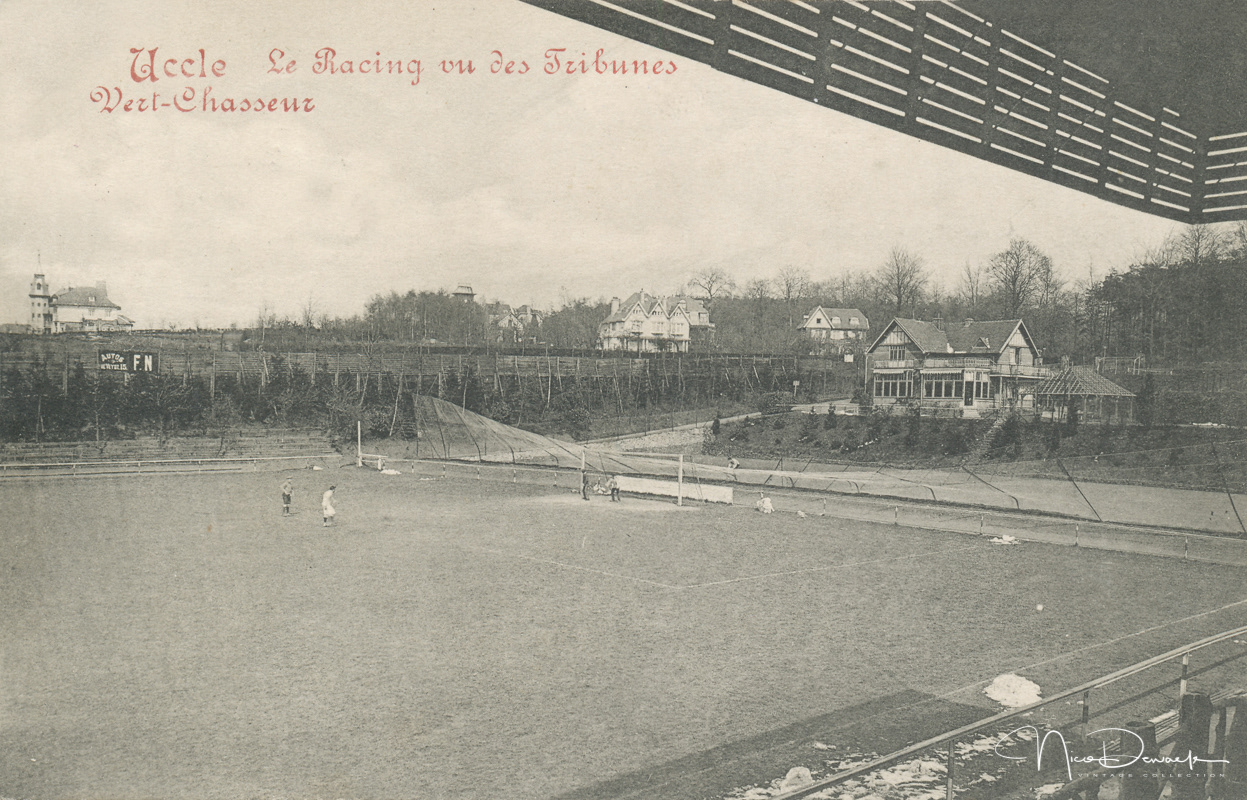
Stade du Vivier d'Oie, Uccle (Year of construction 1902). In the first half of the 20th century, the football branch of Racing Club de Bruxelles played here. The concrete stand (from which the photo was taken) is, as far as we know, the oldest surviving concrete stand in continental Europe. On 1 May 1904, the first international match between the Belgian national football team and the French national football team was played at this location.

The 'Plaines des Manoeuvres' at Charleroi was one of the first places where Olympic Charleroi (Founded in 1911, matricule number 246) played before moving to the Stade de Neuville in 1922. Today it is the spot where the Charleroi courthouse is located.
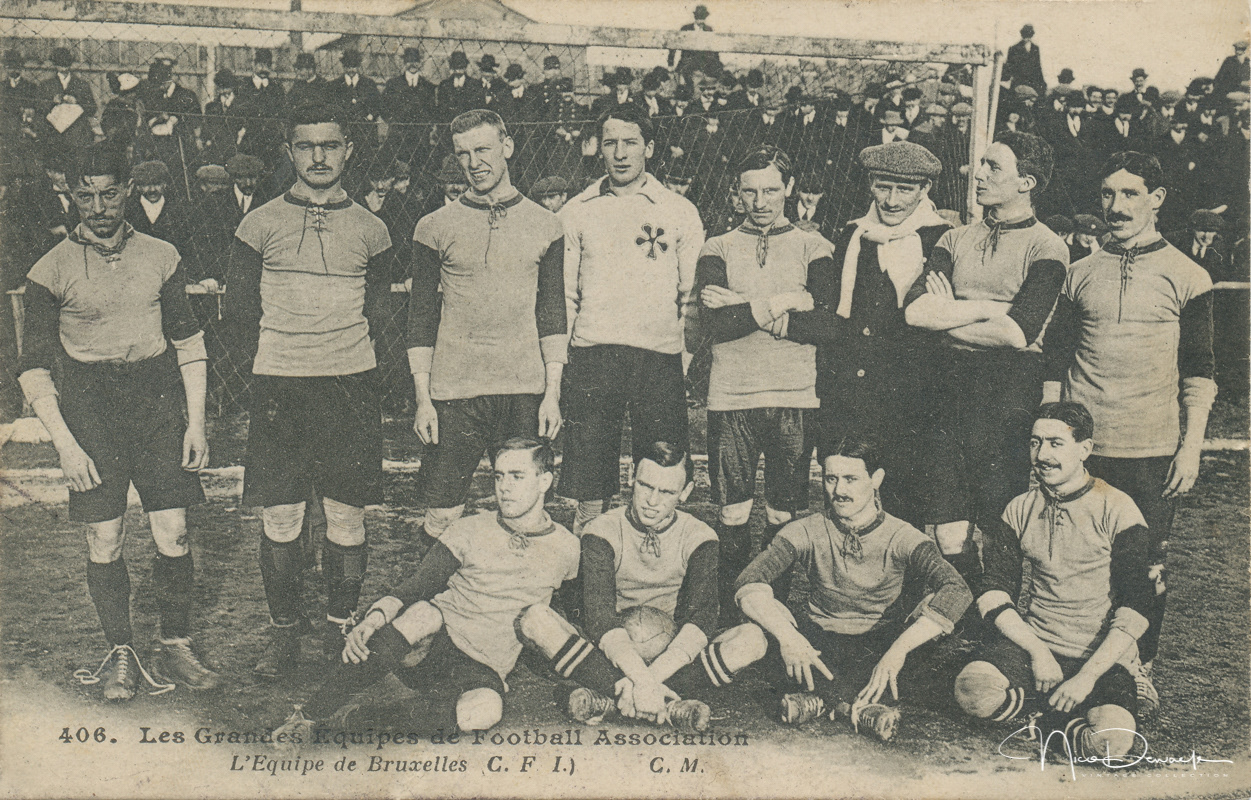
Match Paris - Brussels at Saint-Ouen, France (1 nov. 1912)
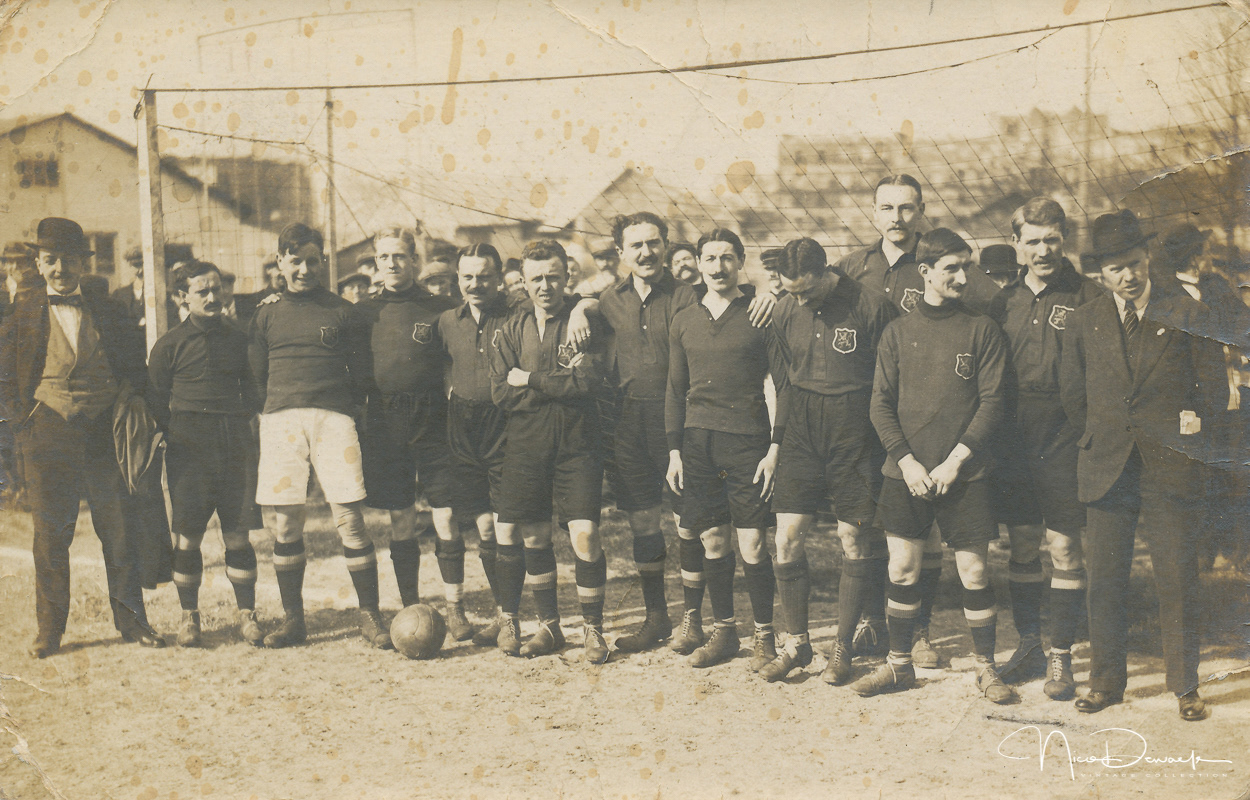
The Belgian (army) team plays for the first time during World War I against a match against a similar French selection (Paris, 18 apr. 1915)

In September 1915, no less than 37 players of Daring Club de Bruxelles were at the front. Star player Edmond Van Cauwenbergh and 29 other Daring men lost their lives in action.
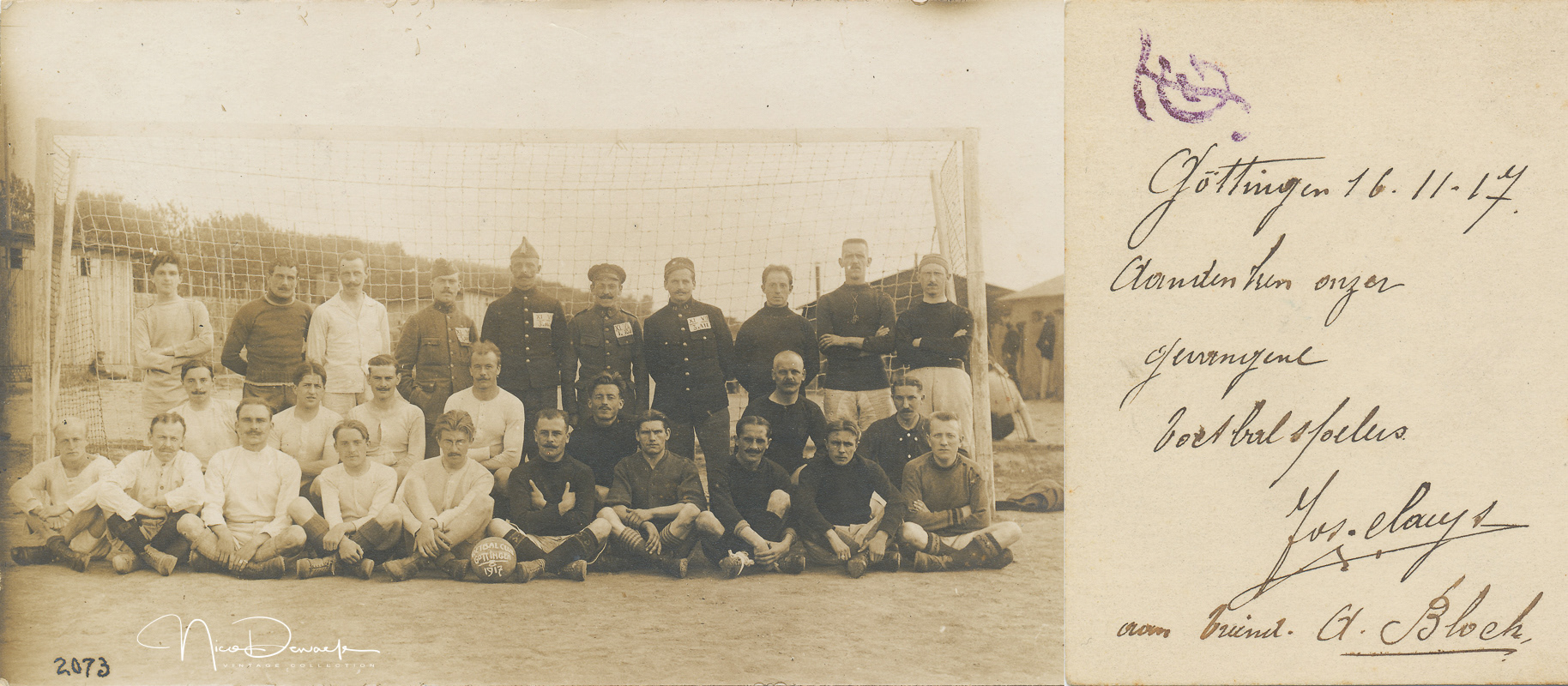
Belgian prisoners of war in Göttigen (Germany - nov. 1917)
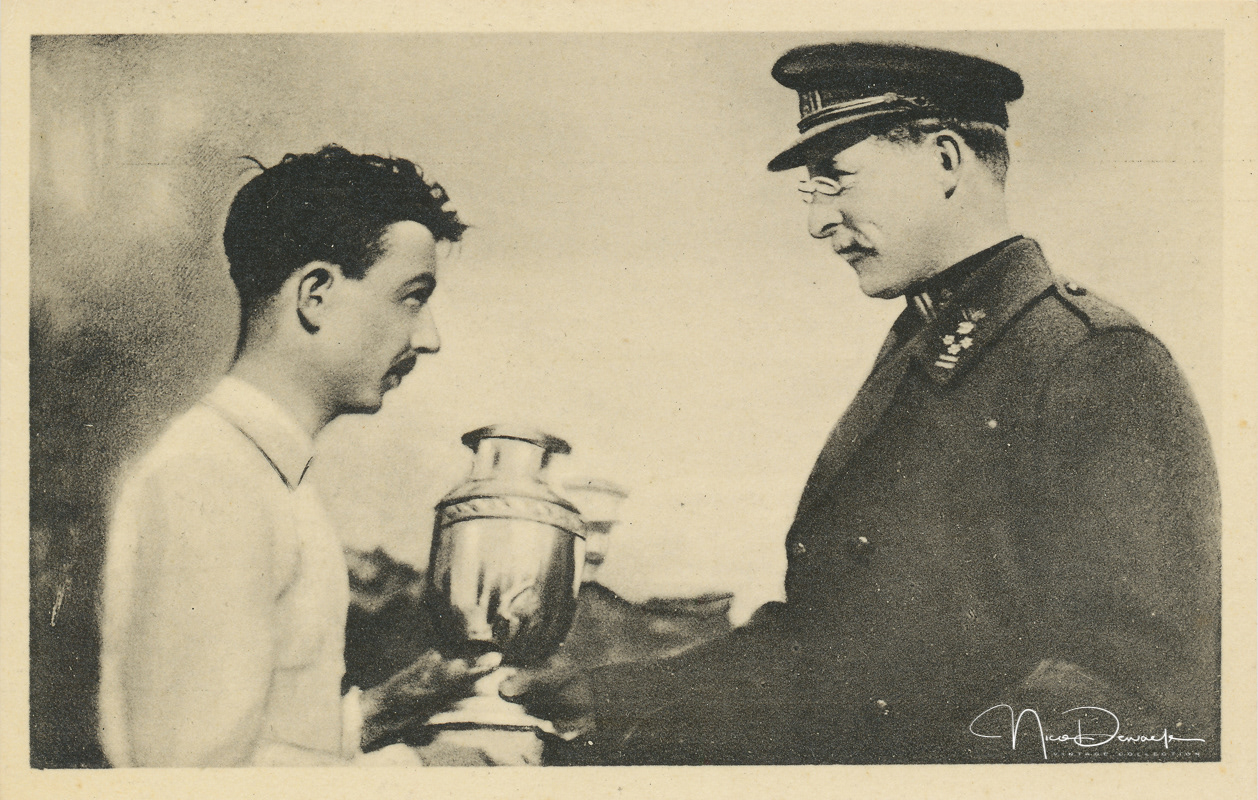
His Majesty Albert I presents the "Schaal Des Konigs 1917-1918" to Ferdinand Wertz, captain of the football team of the 2nd and 22nd Line Regiments (Belgian front on the Yser)

In 1919 Ferdinand Wertz also gets the "Schaal Des Konings" from his Majesty Albert I
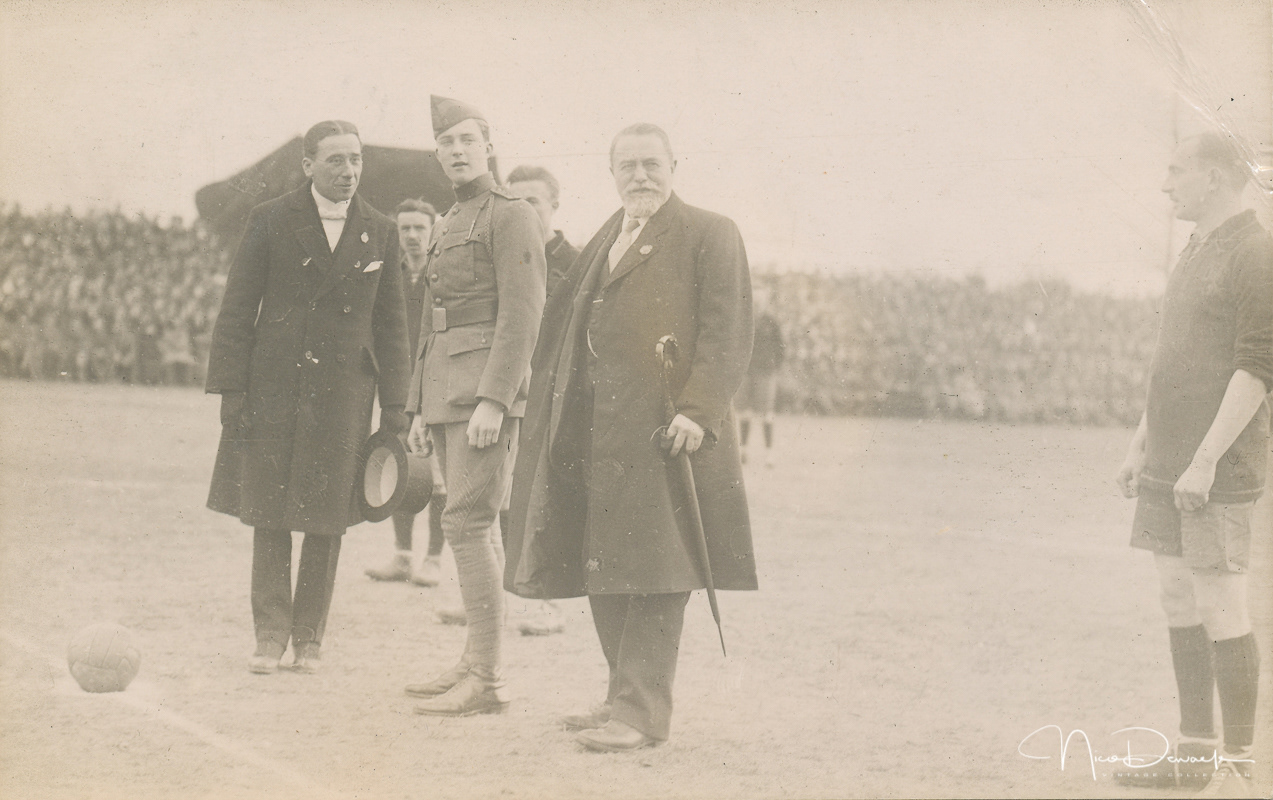
On the pitch of Léopold Club de Bruxelles, Prince Leopold kicks off a match between the military teams of Belgium and England. (6 april 1919)
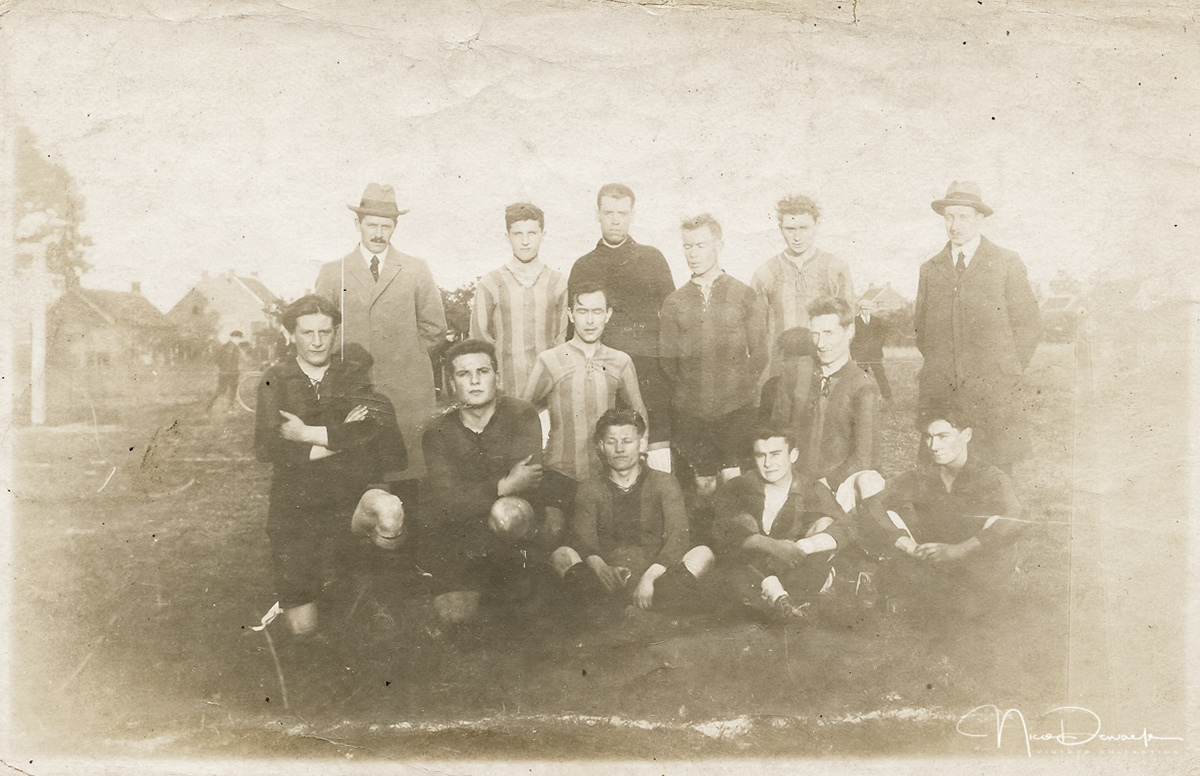
Cappellen Football Club, matricule number 43 (season 1919-1920)
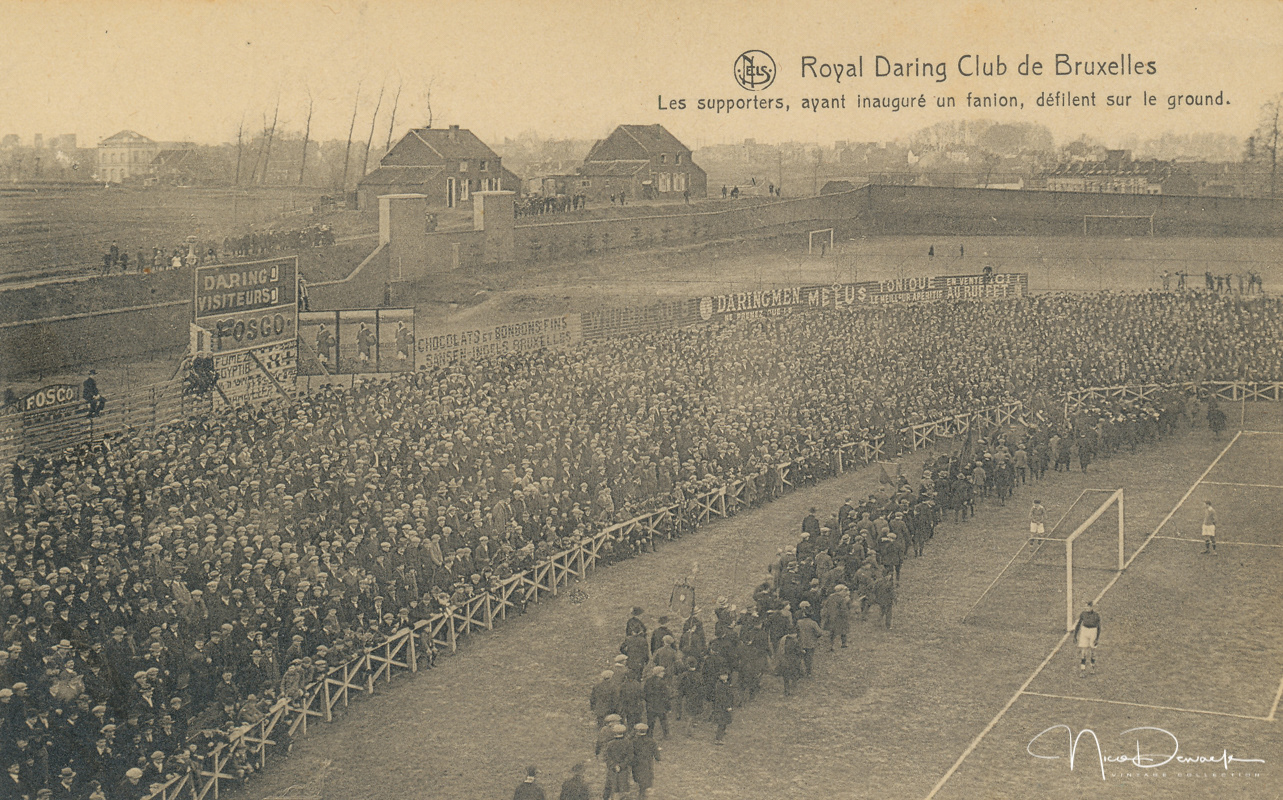
During the 1910s, Daring Club de Bruxelles played in Jette. Because the stadium there was getting too small for the thousands of spectators, they looked for a new location. They chose a site in Sint-Jans-Molenbeek. Because of the First World War, the works were only finished in 1920. →

The stadium was opened on September 12th 1920. For that time, it was an advanced stadium with a large grandstand (5500 spectators), an athletics track, a hockey field, tennis courts and even a solarium.

Daring Club de Bruxelles in the 1922-1923 season. Star player Armand Swartenbroeks on the left.
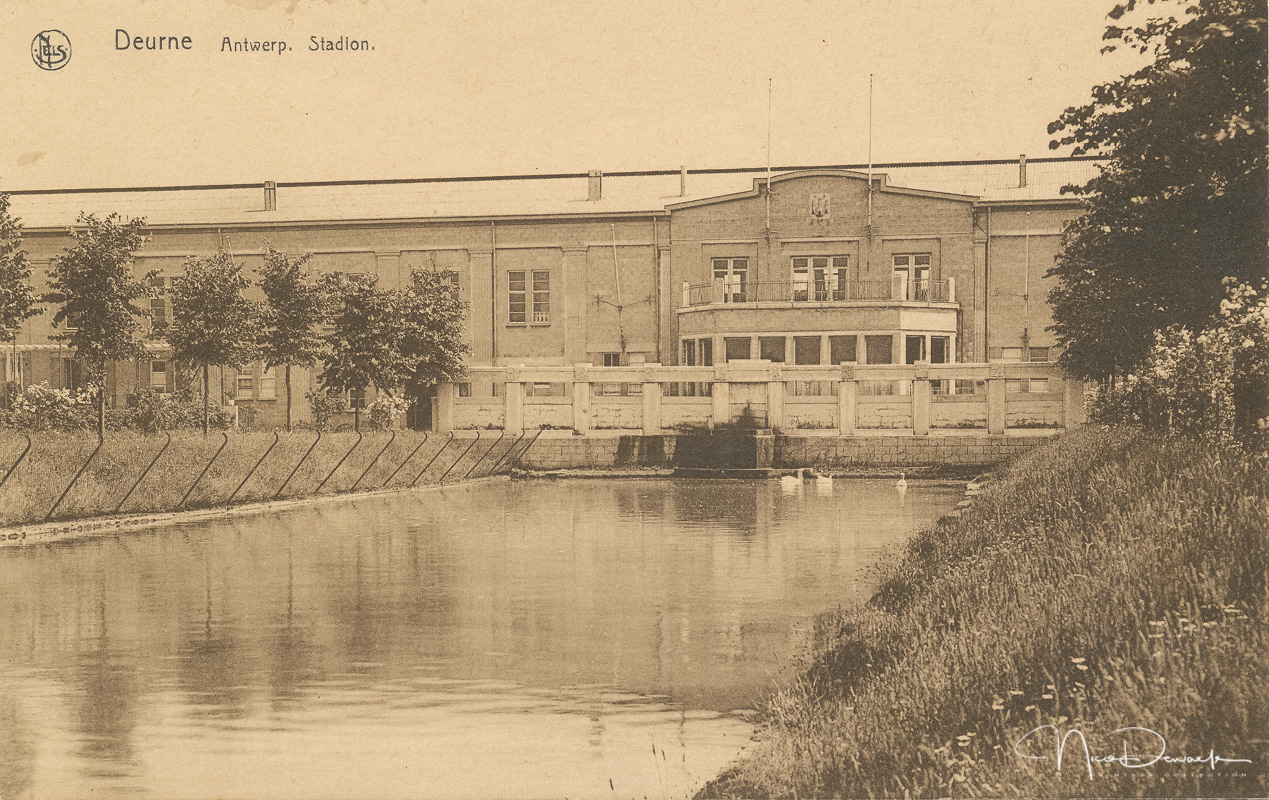
The front of the Royal Antwerp FC 'Bosuil' stadion as it looked at the opening in 1923.
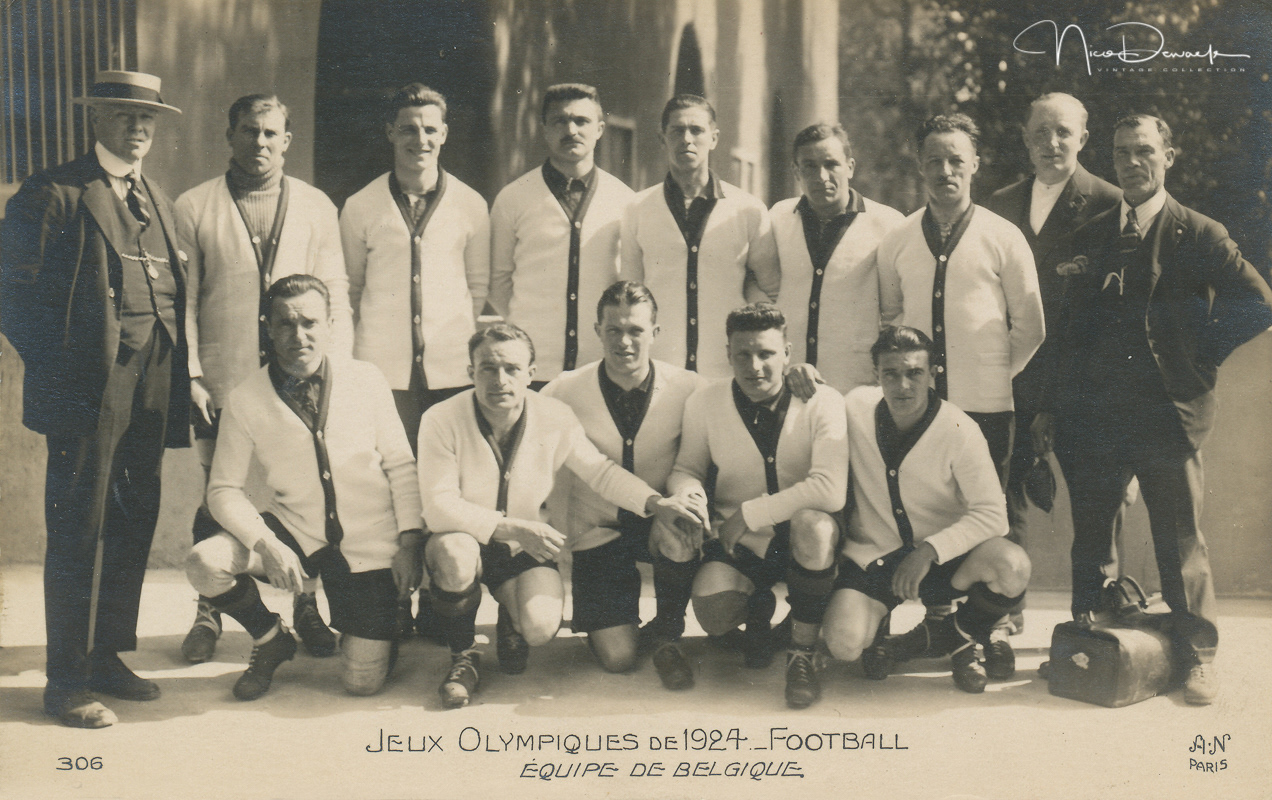
Team Belgium at the 1924 Paris Olympic Games
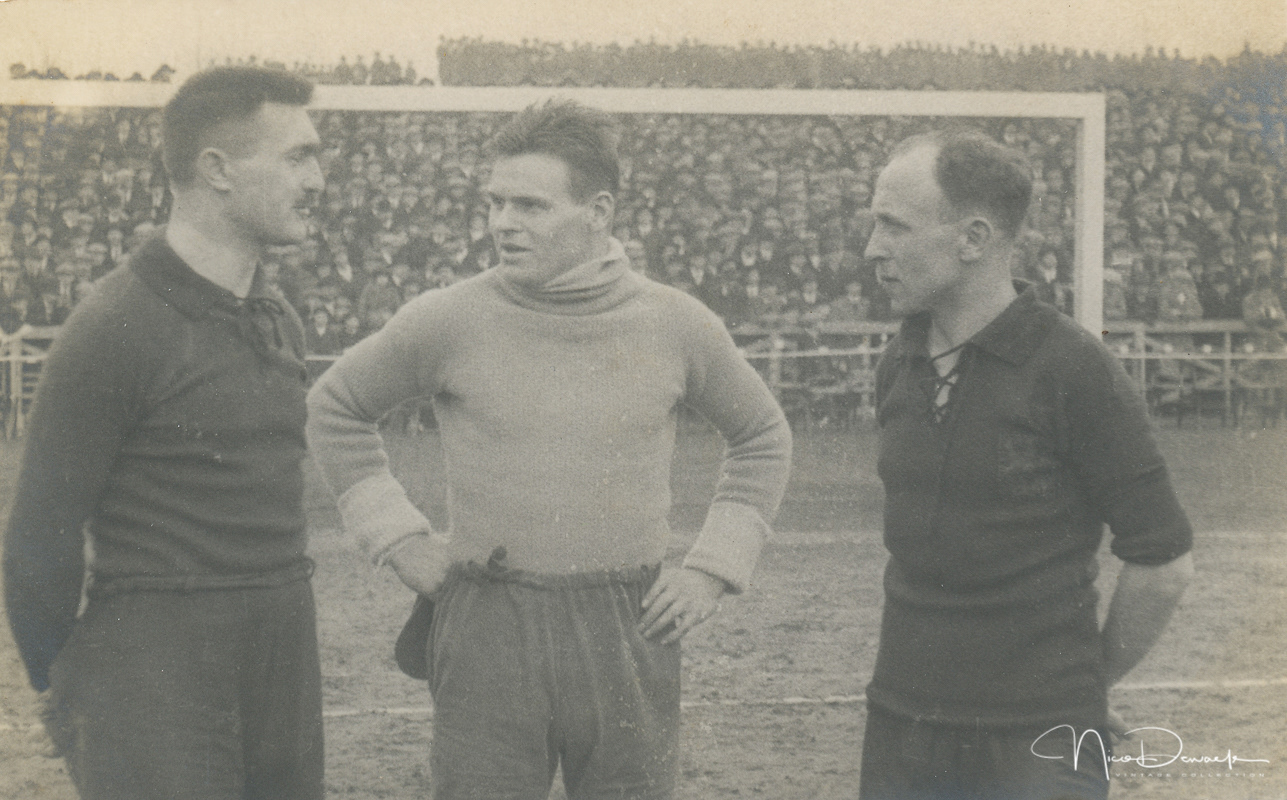
Armand Swartenbroecks - Jan De Bie - Frans Demol, Sweden - Belgium (Olympic Games Paris - 29 may 1924)

Hungary - Belgium 1-3 (MTK Stadium Budapest, 21 may 1925)
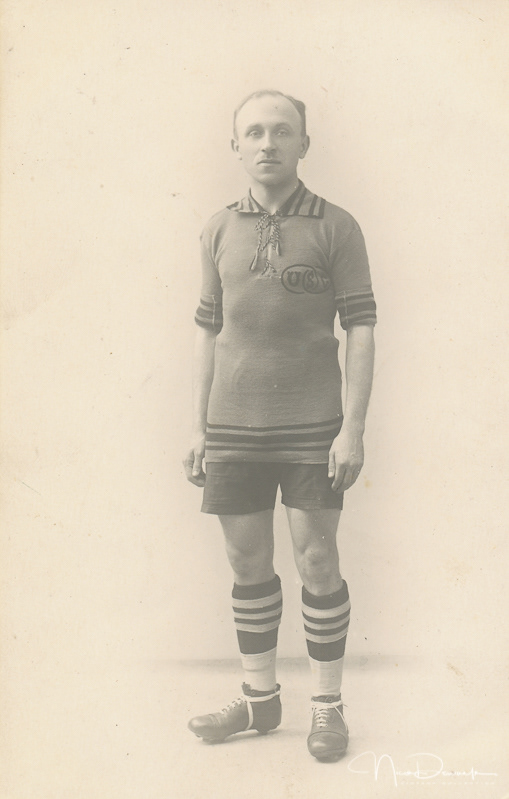
Union Saint-Gilloise player Frans Demol (jan. 1926)
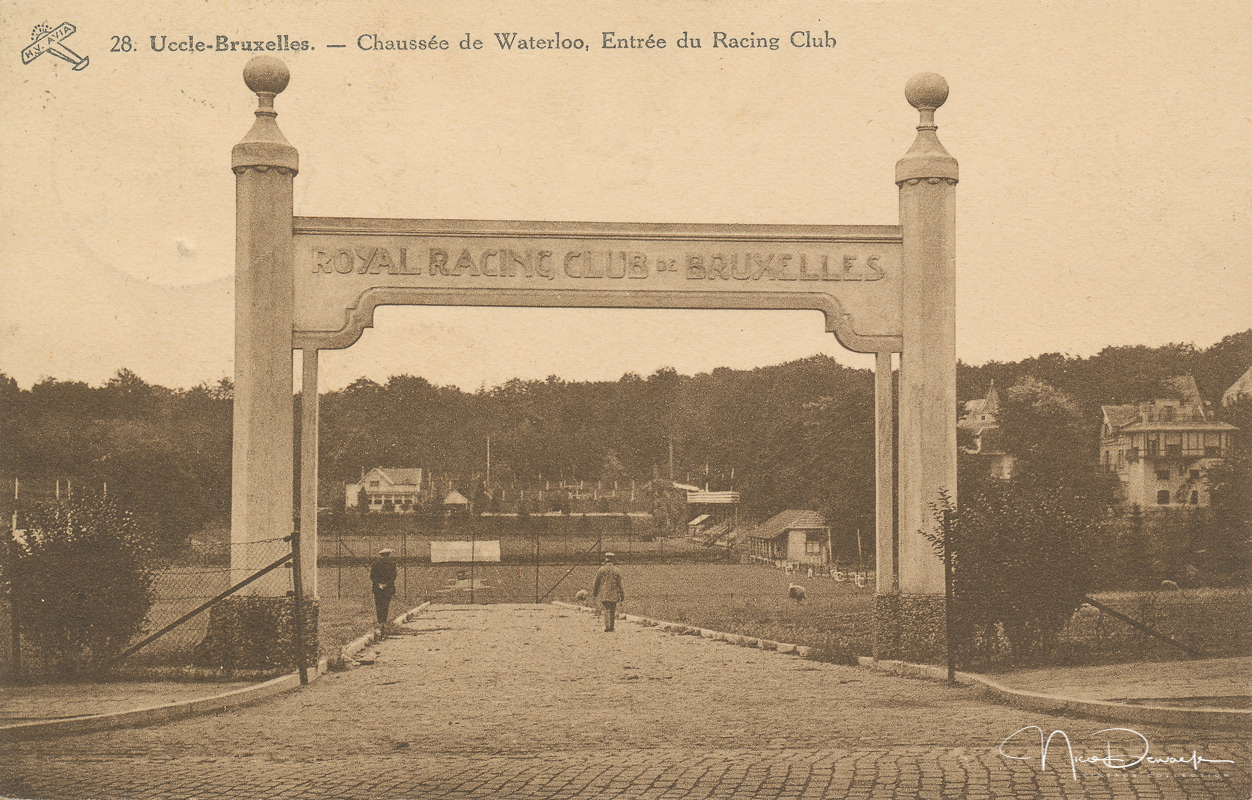
Racing Club Brussels (founded in 1891) was one of the biggest clubs in Brussels in the first years of the Belgian league and won several league titles. In 1926, Racing became "royal", and it was at this time that the gateway to the Chaussée de Waterloo was built.
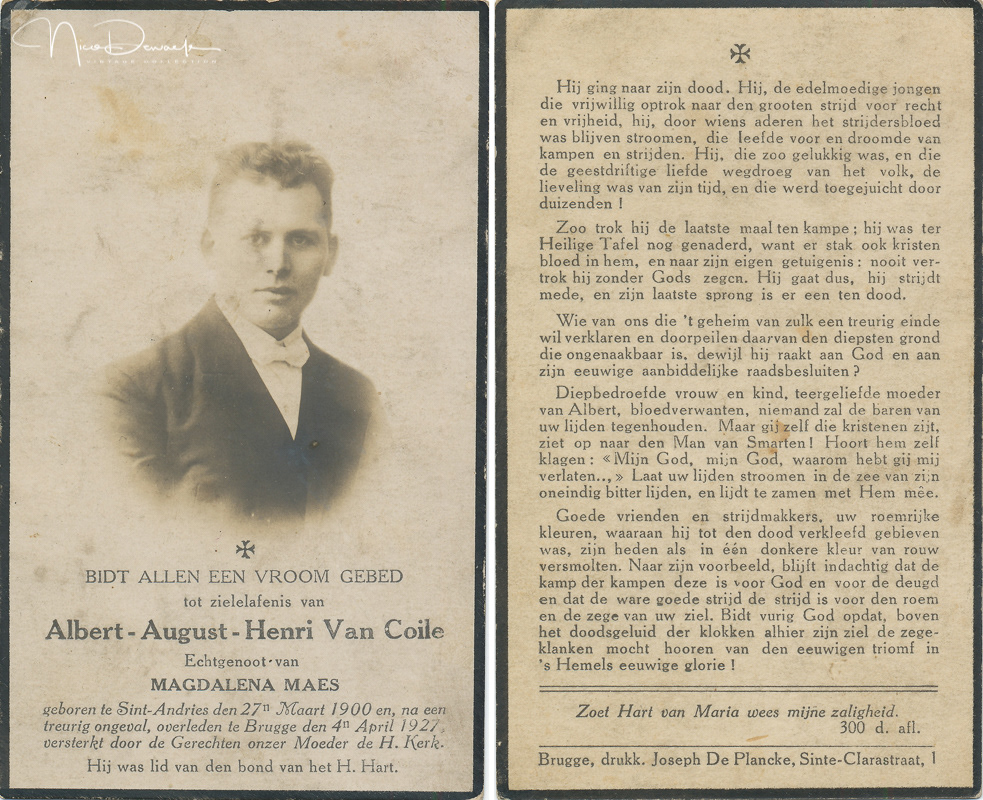
Cercle Brugge player Albert Van Coile who died because of injuries sustained in a Tournement in Tourcoing (F). He collided with the local goalkeeper, had no visible injuries, but his situation deteriorated the day after the game. A speedy operation had no result. On the 4th op April 1927 Albert died from a tear in his bowels.
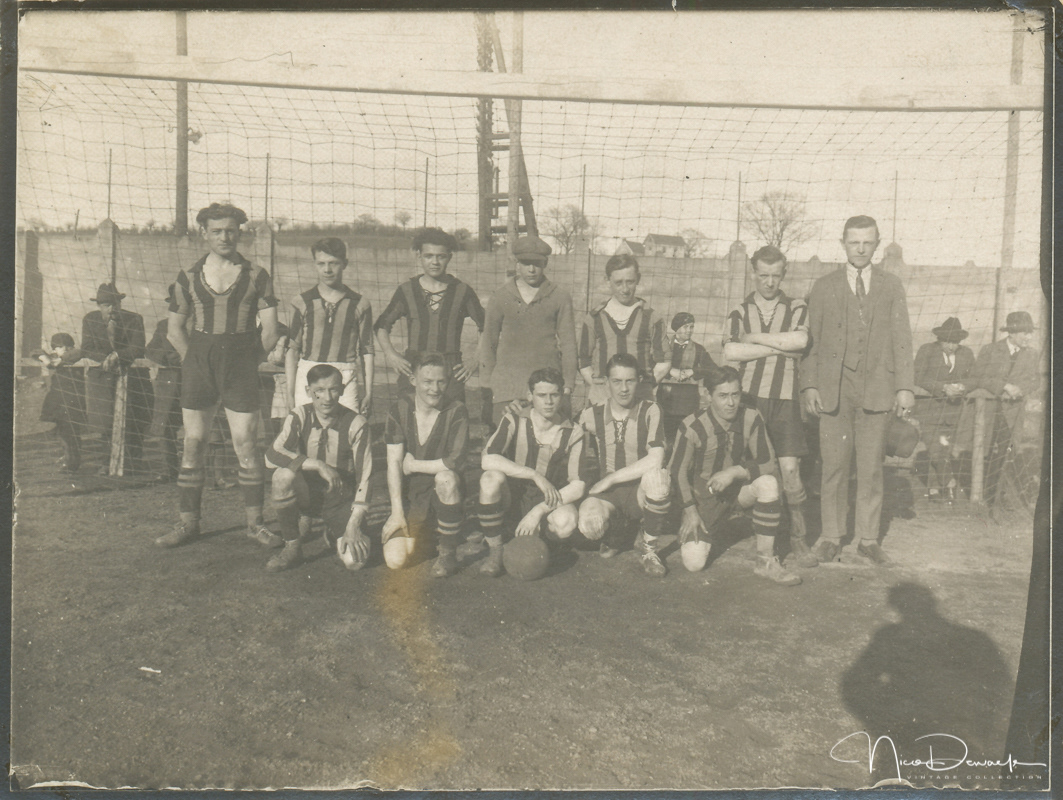
Royal Dolhain FC in the year 1928 (3th division). Dolain FC, located near Verviers, was founded in 1898 with matricule number 9,.
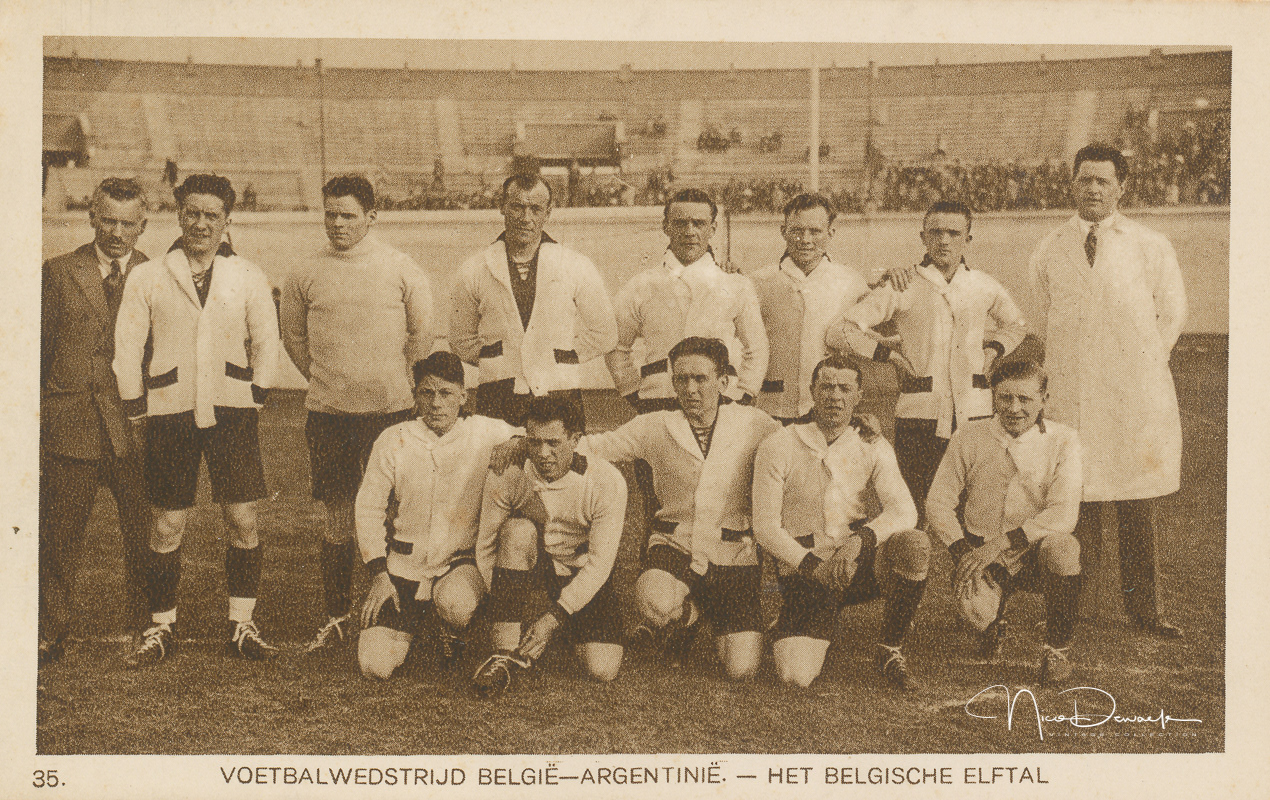
Belgium - Argentina (Olympic Games Amsterdam 1928)
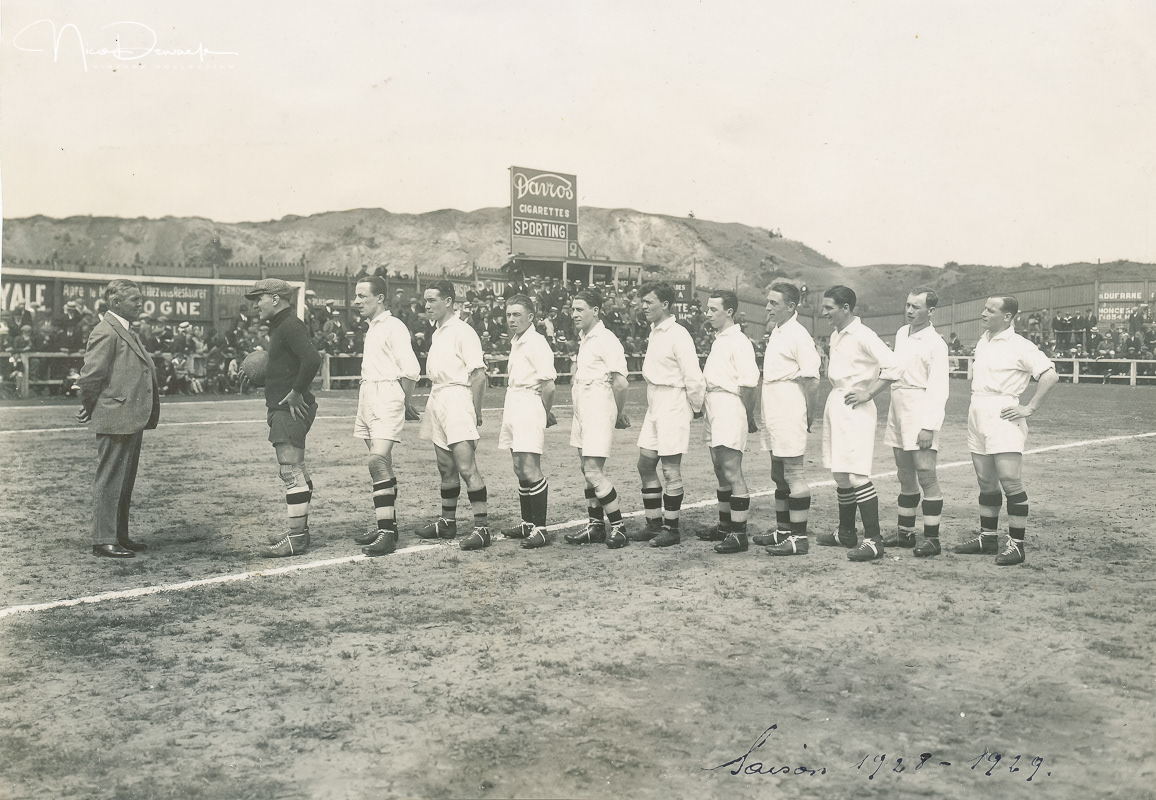
Sporting Charleroi 1928-1929. That season the Zebras are Belgian promotion champions and reach Division 1, our current Division 1B
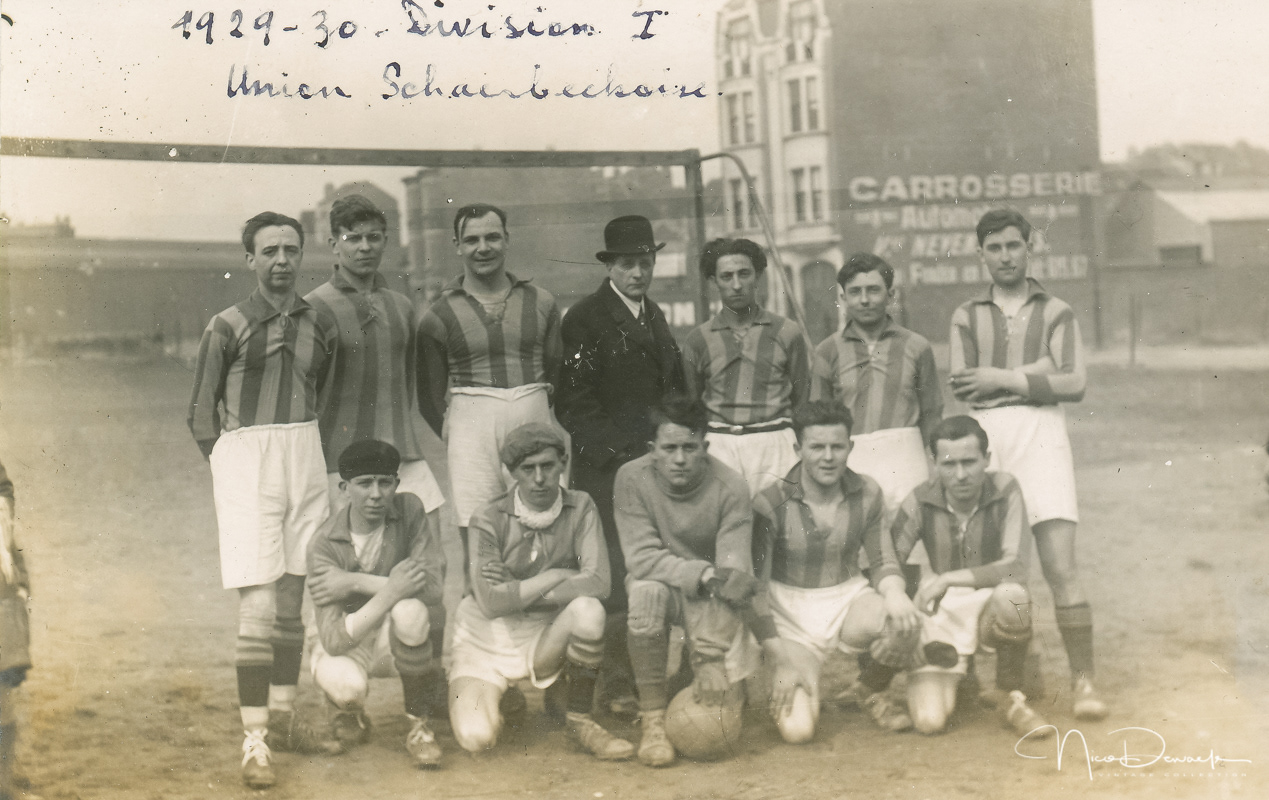
Union Schaerbeekoise 1929 - 1930
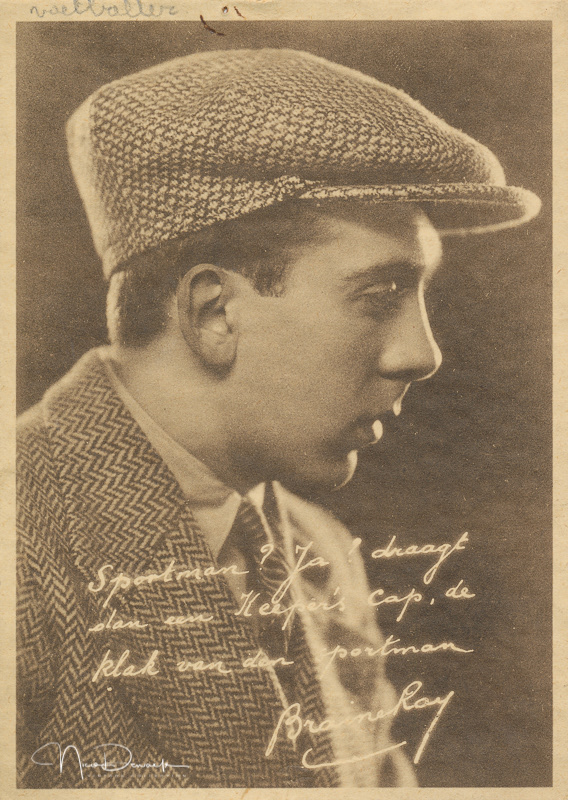
Belgium's first ever professional player Raymond 'Ray' Braine (early 1930s)
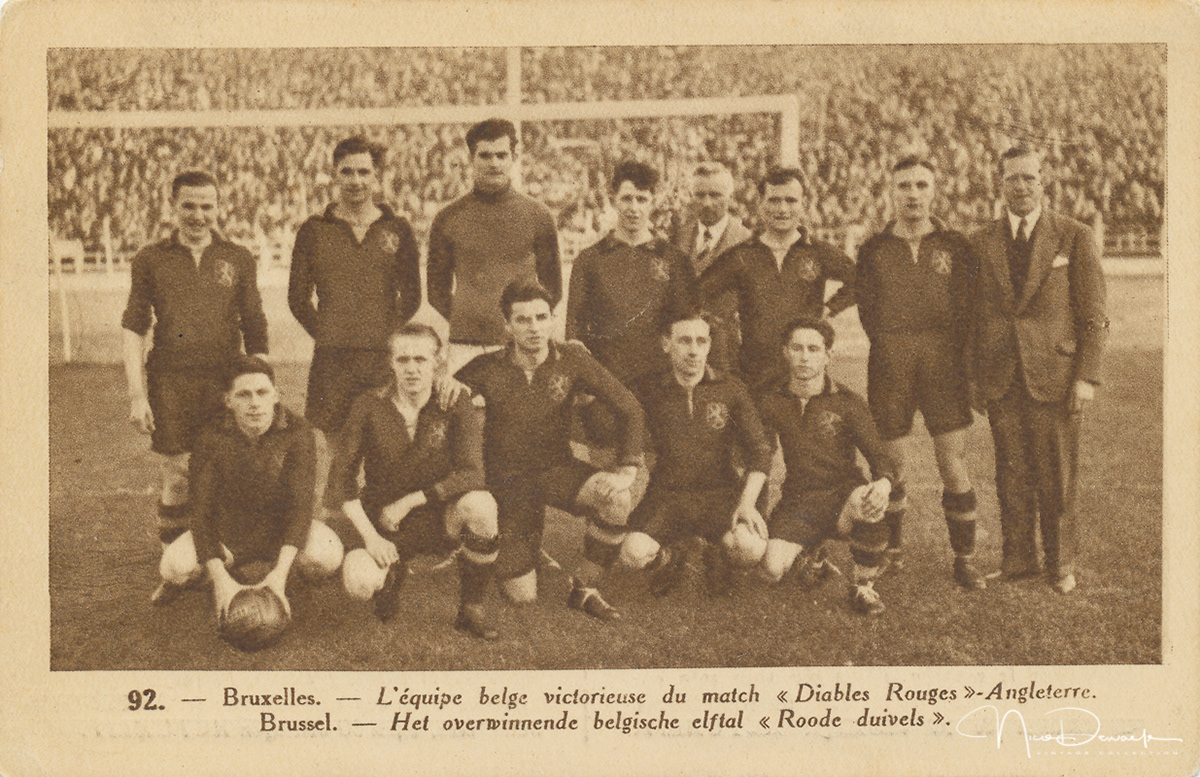
Belgian national team 1931-1932
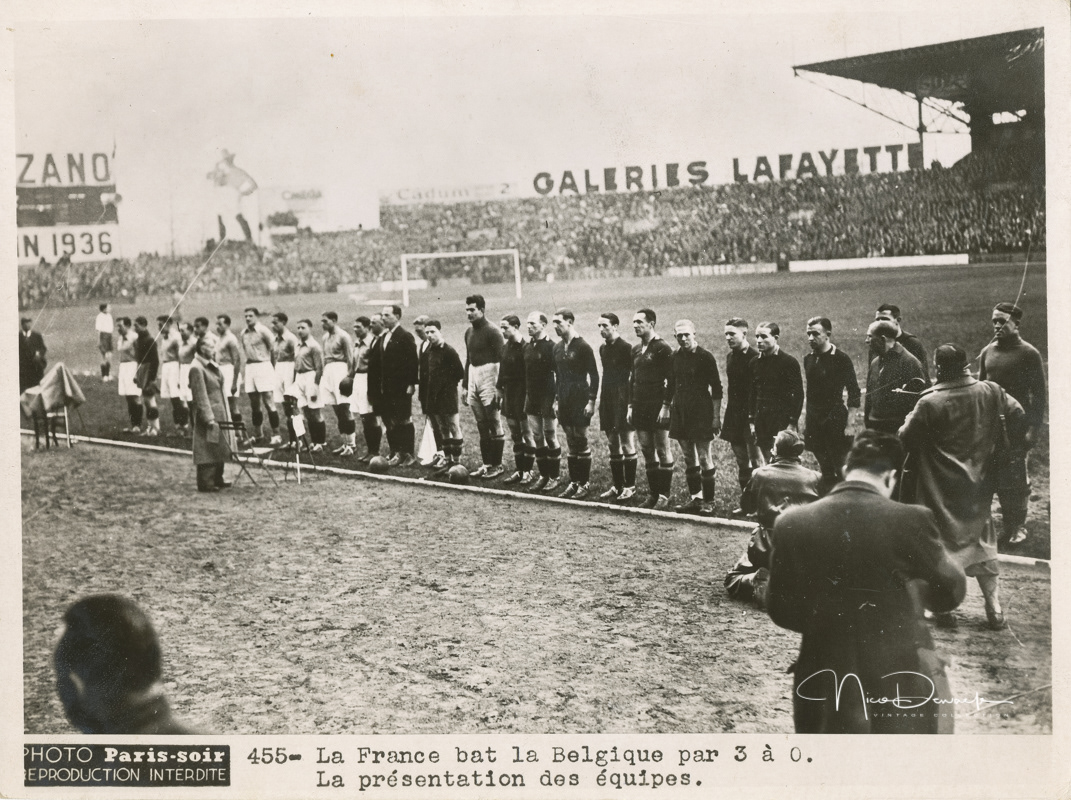
France - Belgium (Colombes, march 8th 1936)
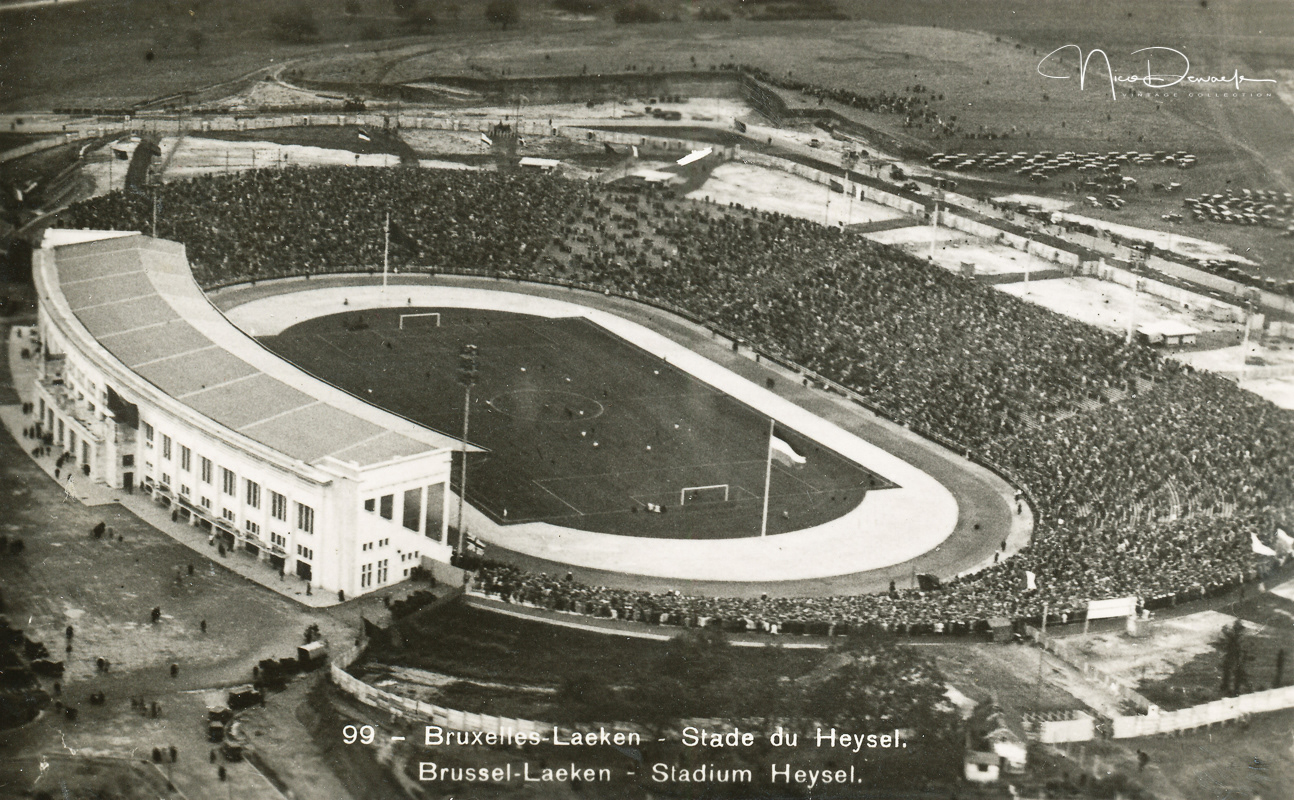
Heysel Stadium Brussels, Now known as the King Baudouin Stadium (postcard from 1939)

KV Mechelen champion in first division 1945/1946
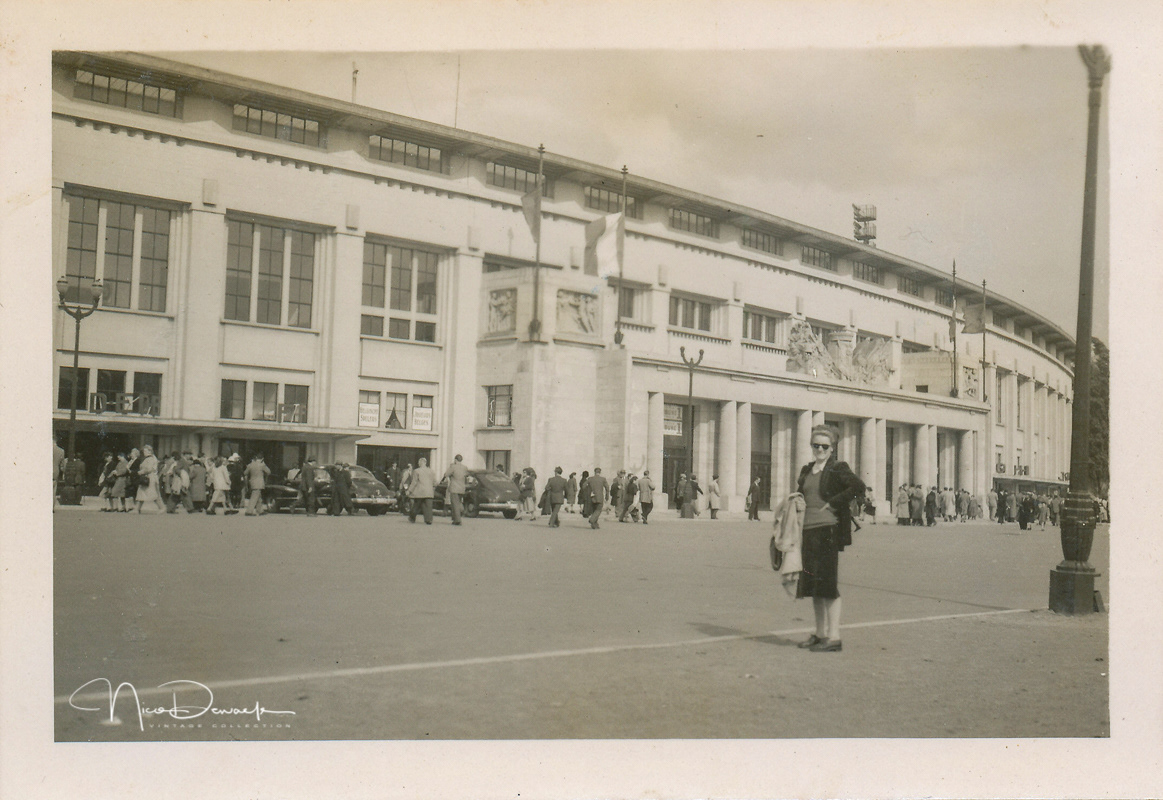
posing in front of the Heysel Stadium before the game Belgium - France (Brussels, 6 june 1948)

The Belgian national team before the game against France (17 oct. 1948)

Sporting Charleroi at the FC Boom stadium (feb. 20th 1949). Thas season Charleroi ended 4th in our First Division.

Belgian Beerschot AC striker Rik Coppens (early 1950s)
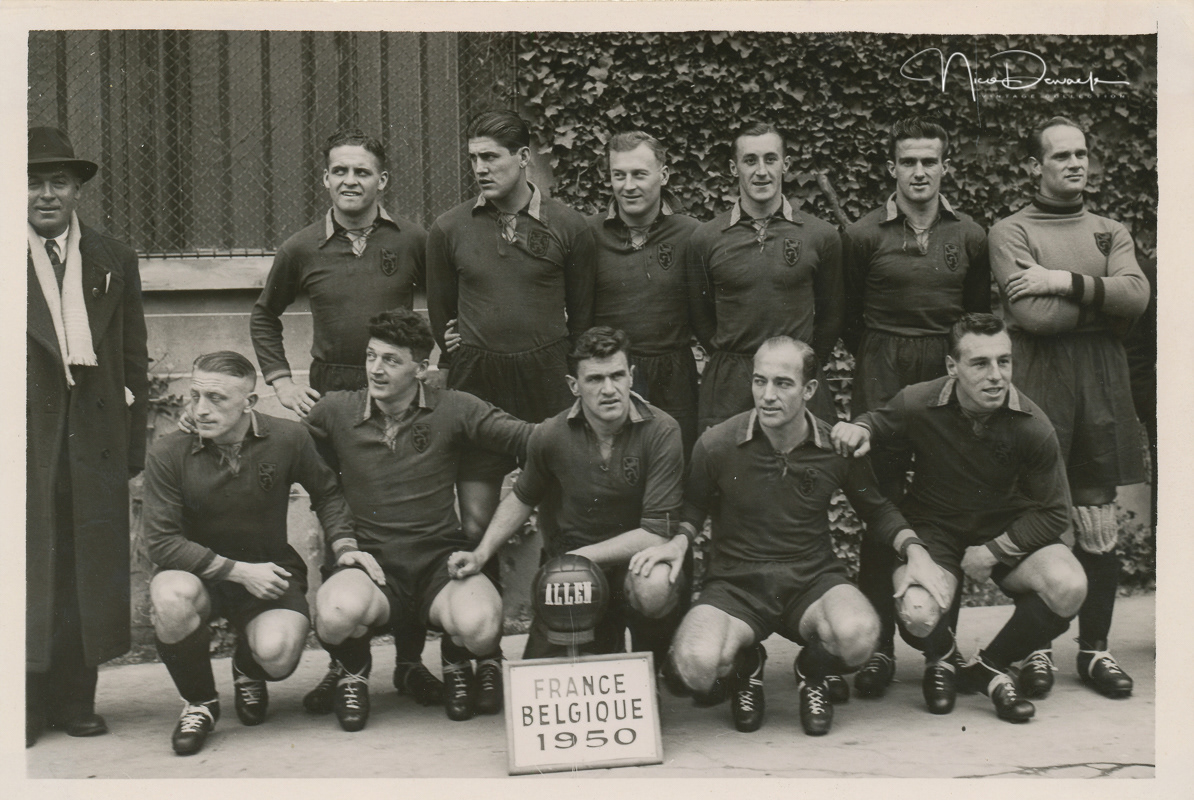
The Belgian national team before the game against France (1 nov. 1950)

National Team Belgium 1951-1952
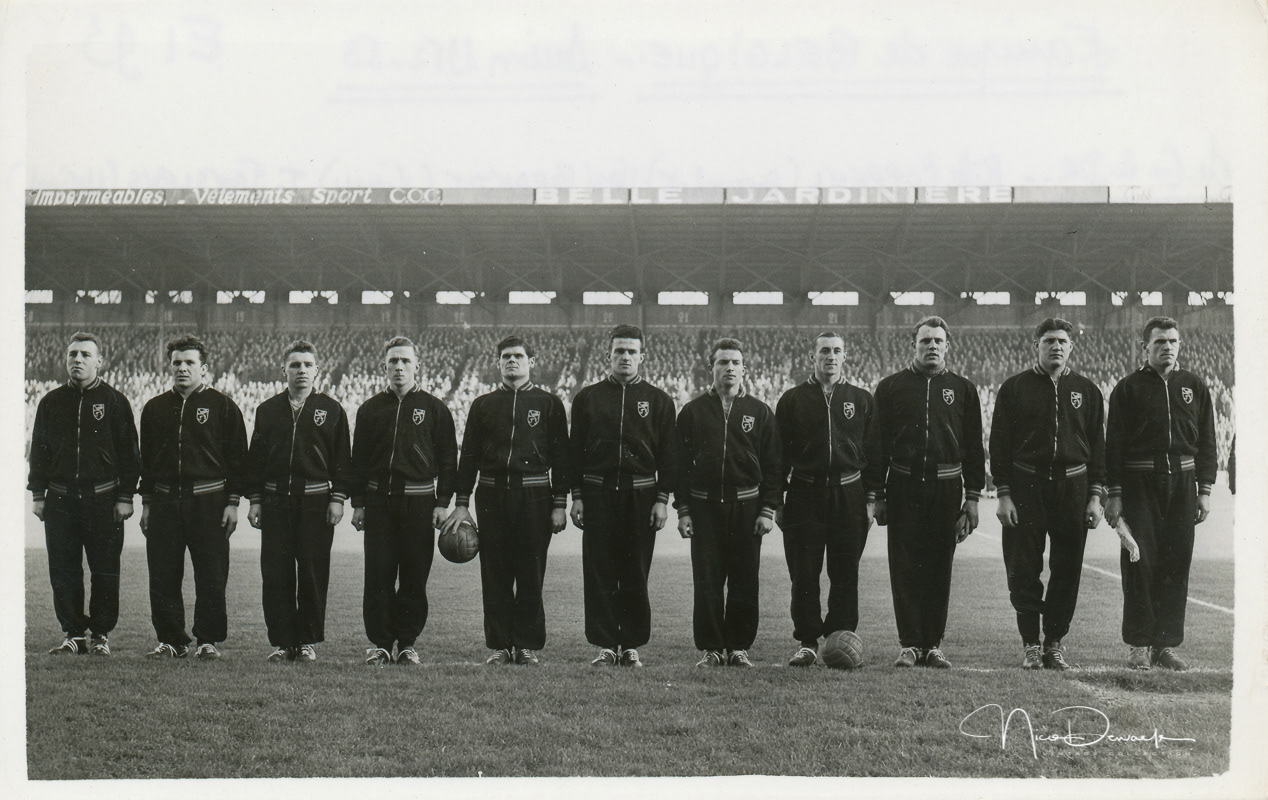
The Belgian national team before the game against France (25 dec. 1952)
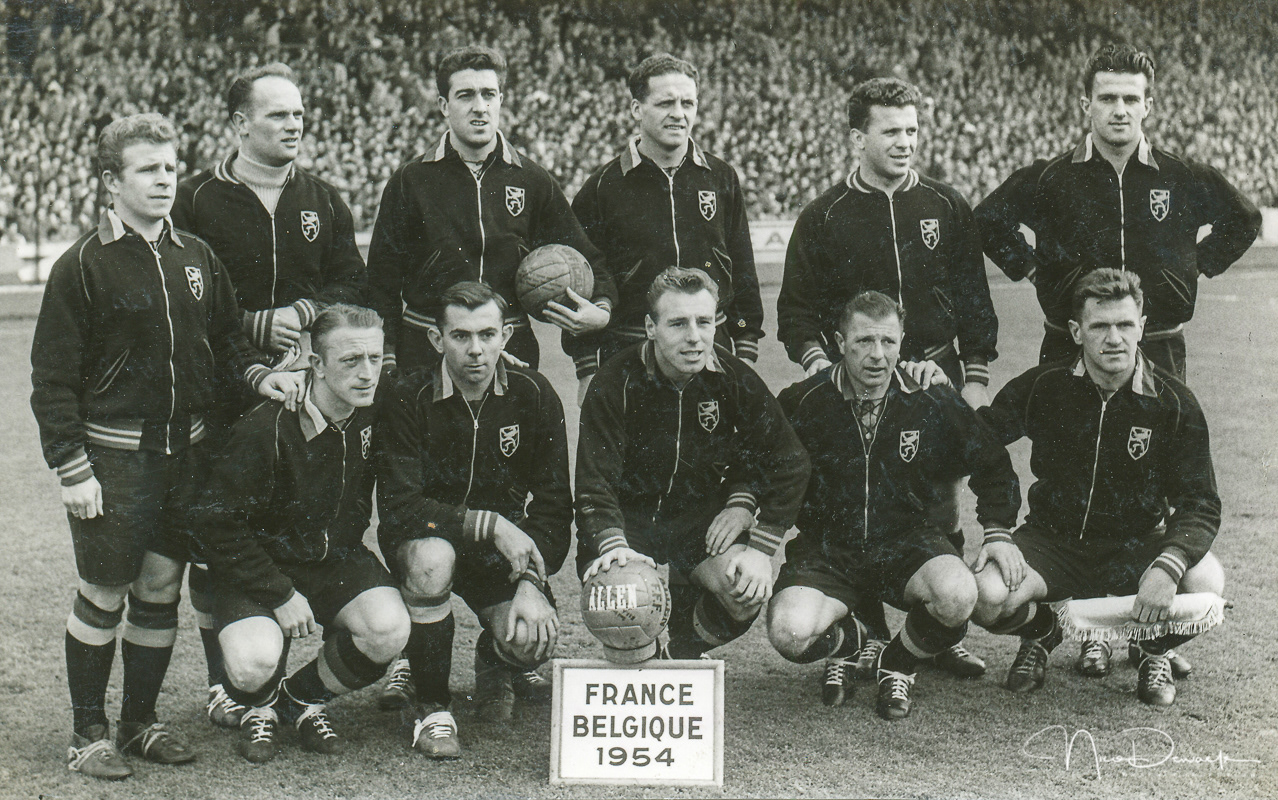
France - Belgium (11 Nov. 1954)

RCS Verviétois 1955-1956. The club was founded in 1896 as Verviers Foot-Ball Club. (#8). In 1903, the club merged with Stade Wallon de Verviers to form Club Sportif Verviétois. In 2014, the team experienced financial problems and it was decided to go into liquidation, which meant a drain on players. The club was able to stay in the third division, but at the end of the 2014-2015 season the club relegated to the fourth division, and RCS Verviers ended its existence.
